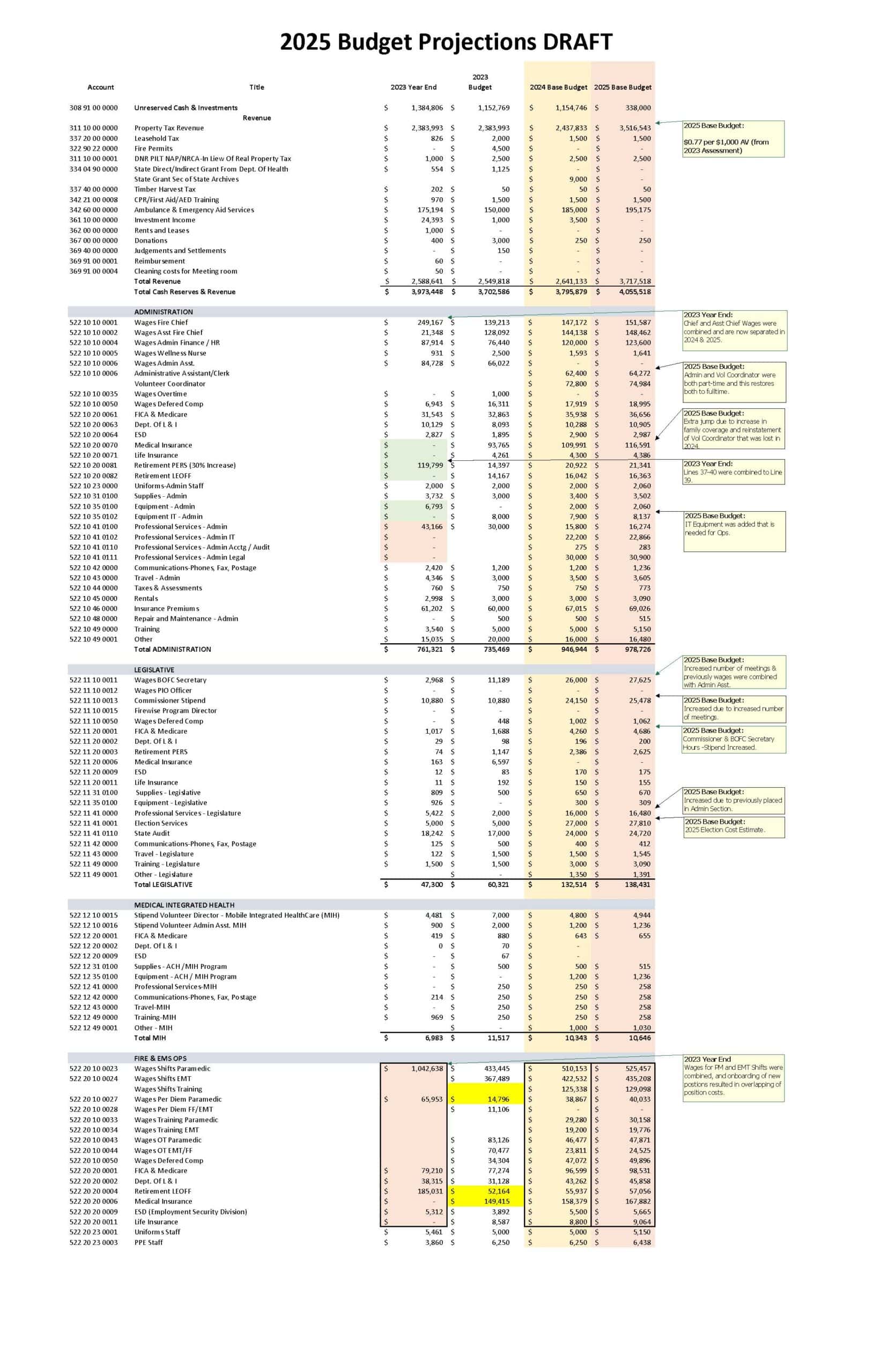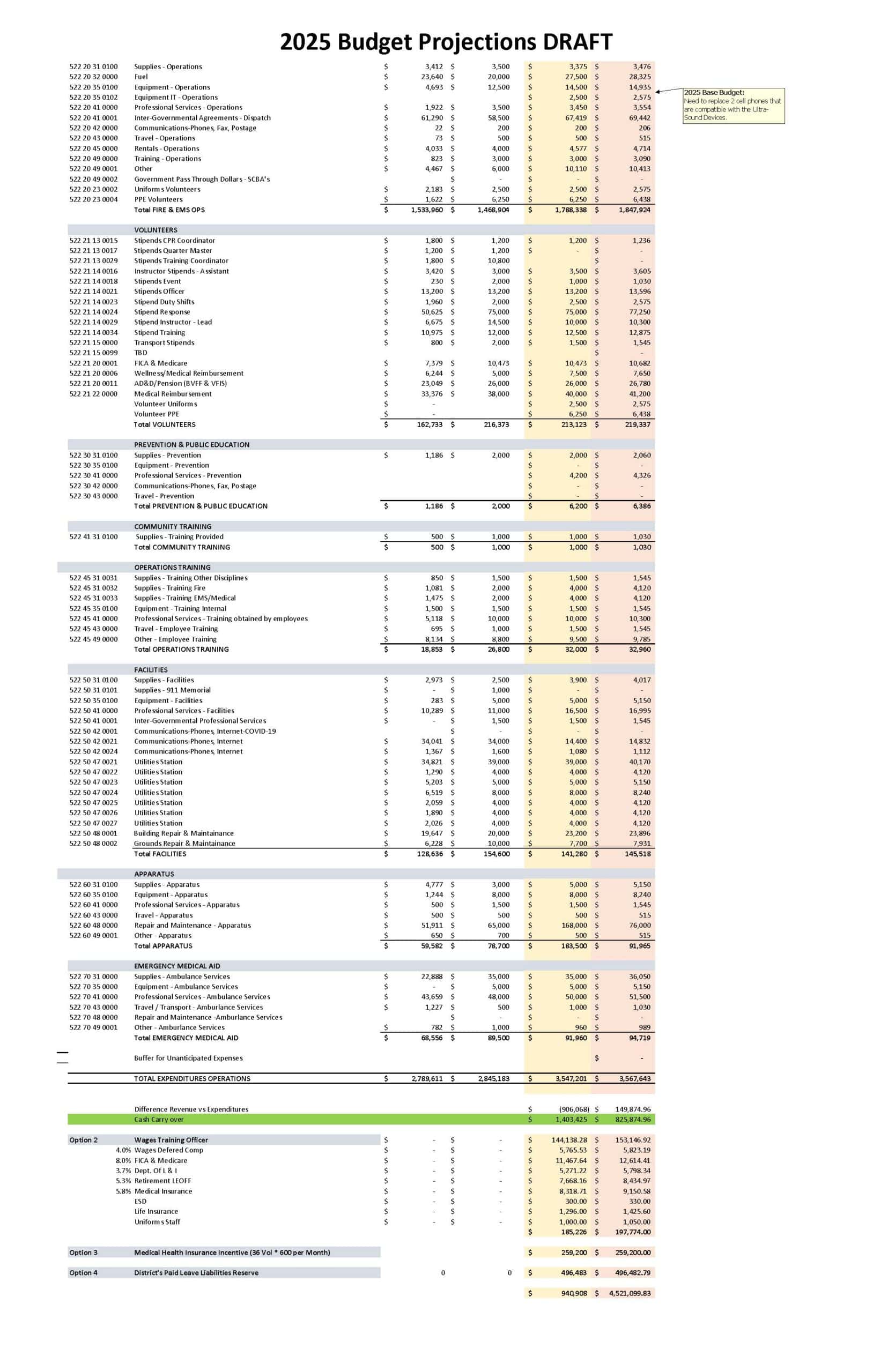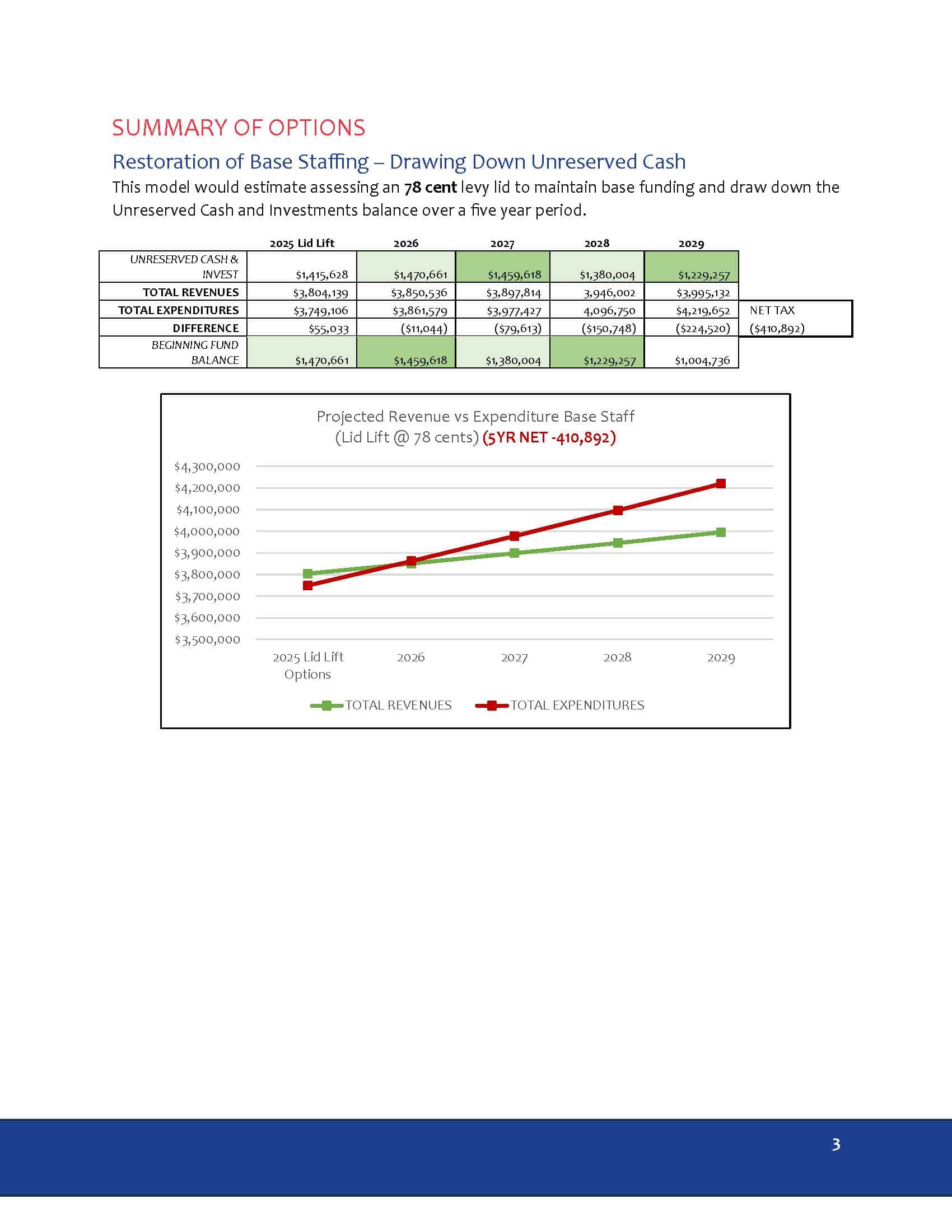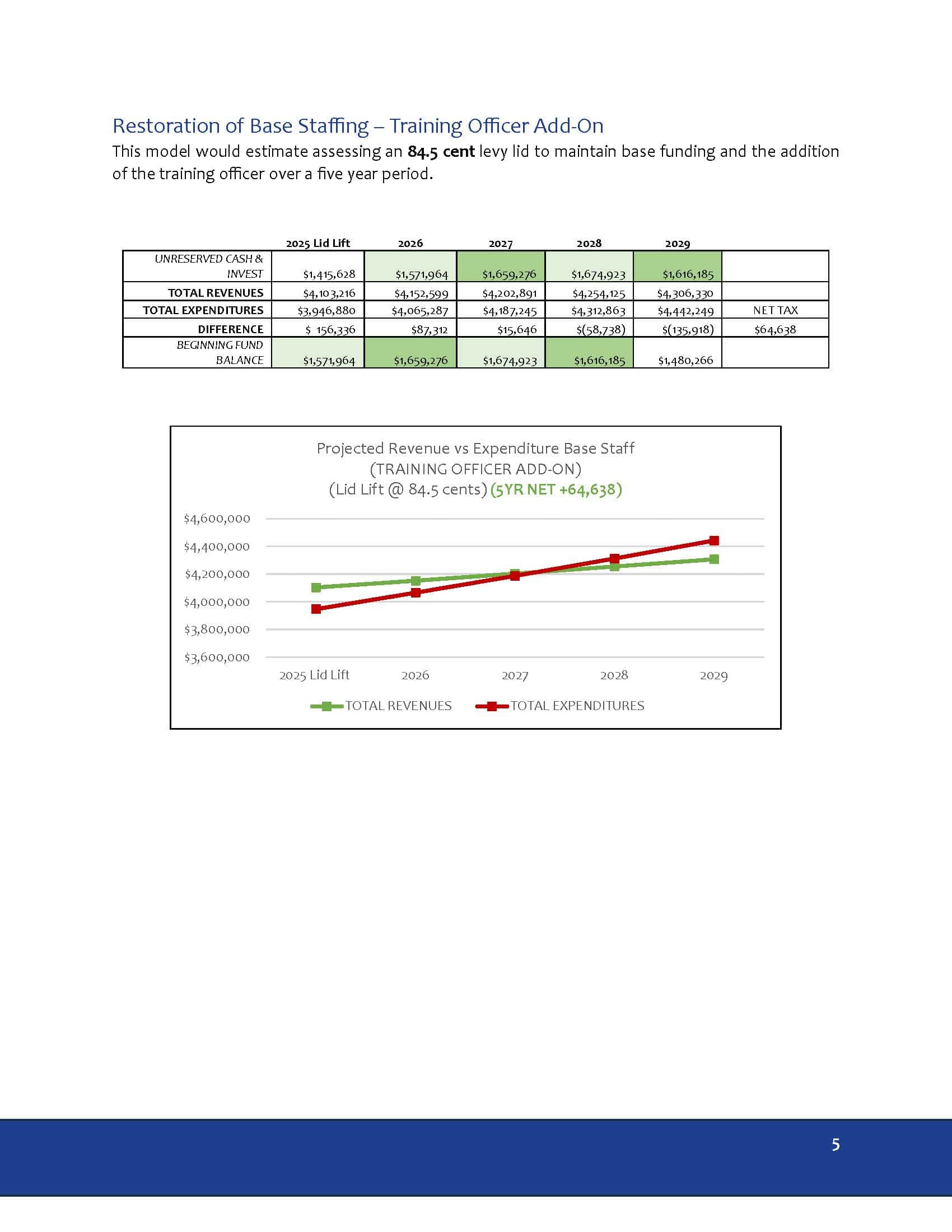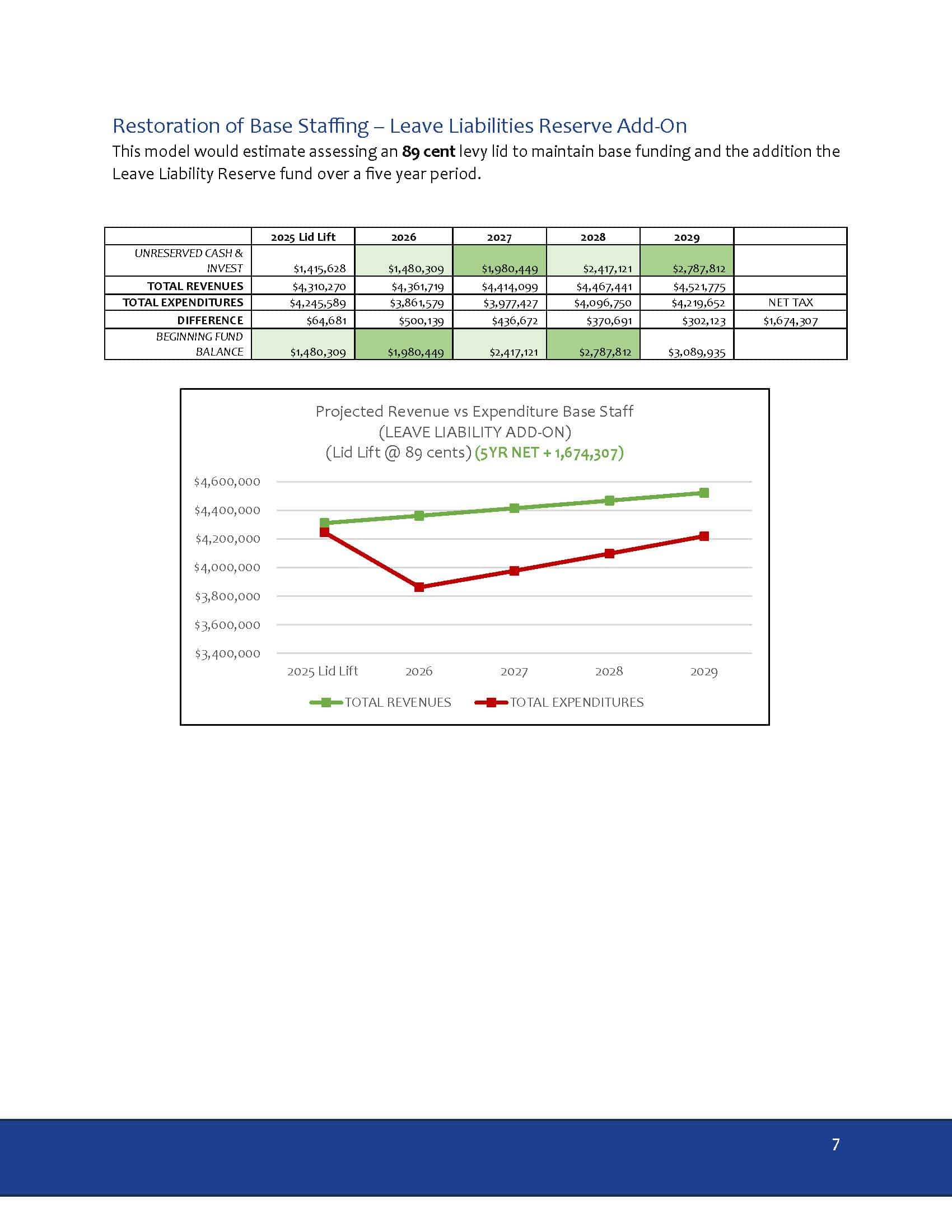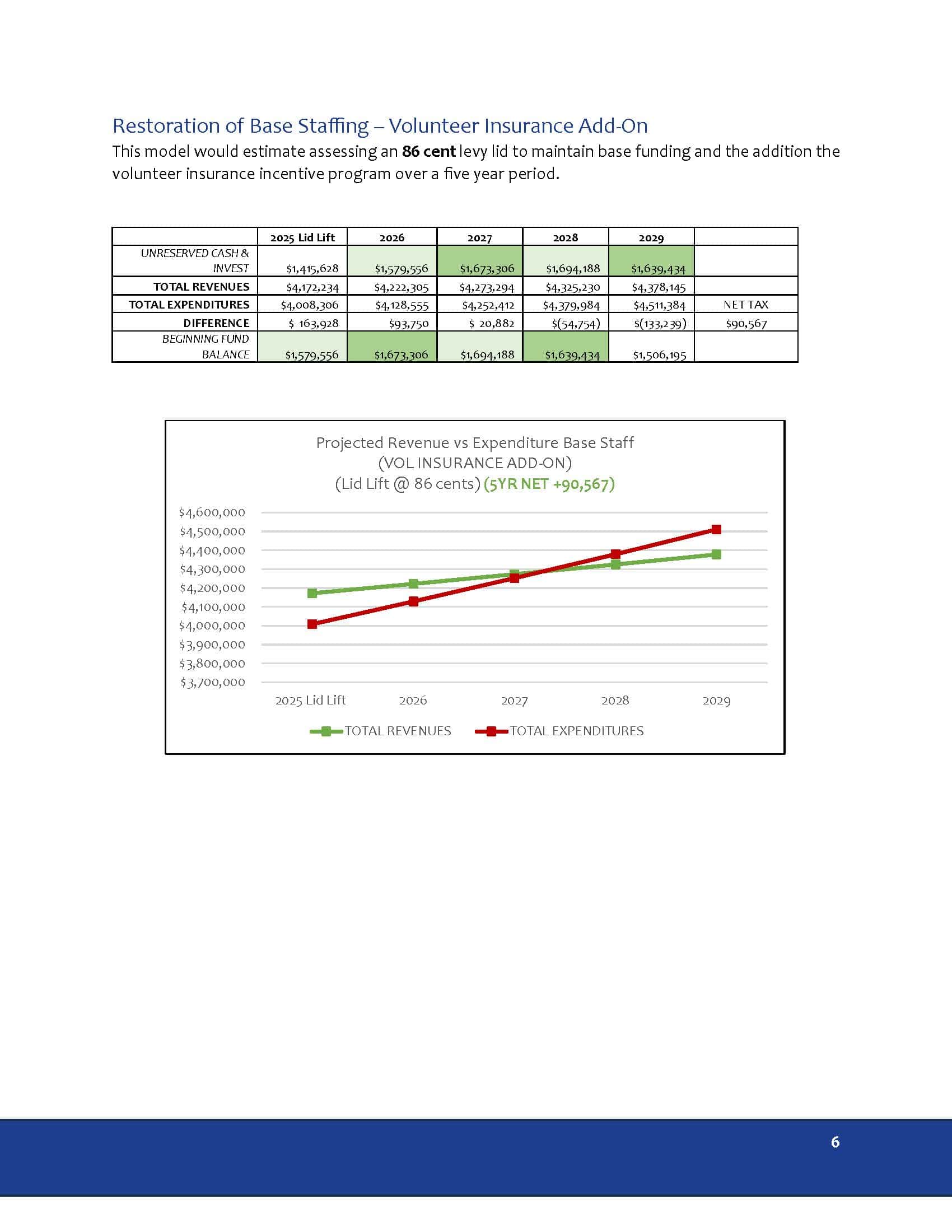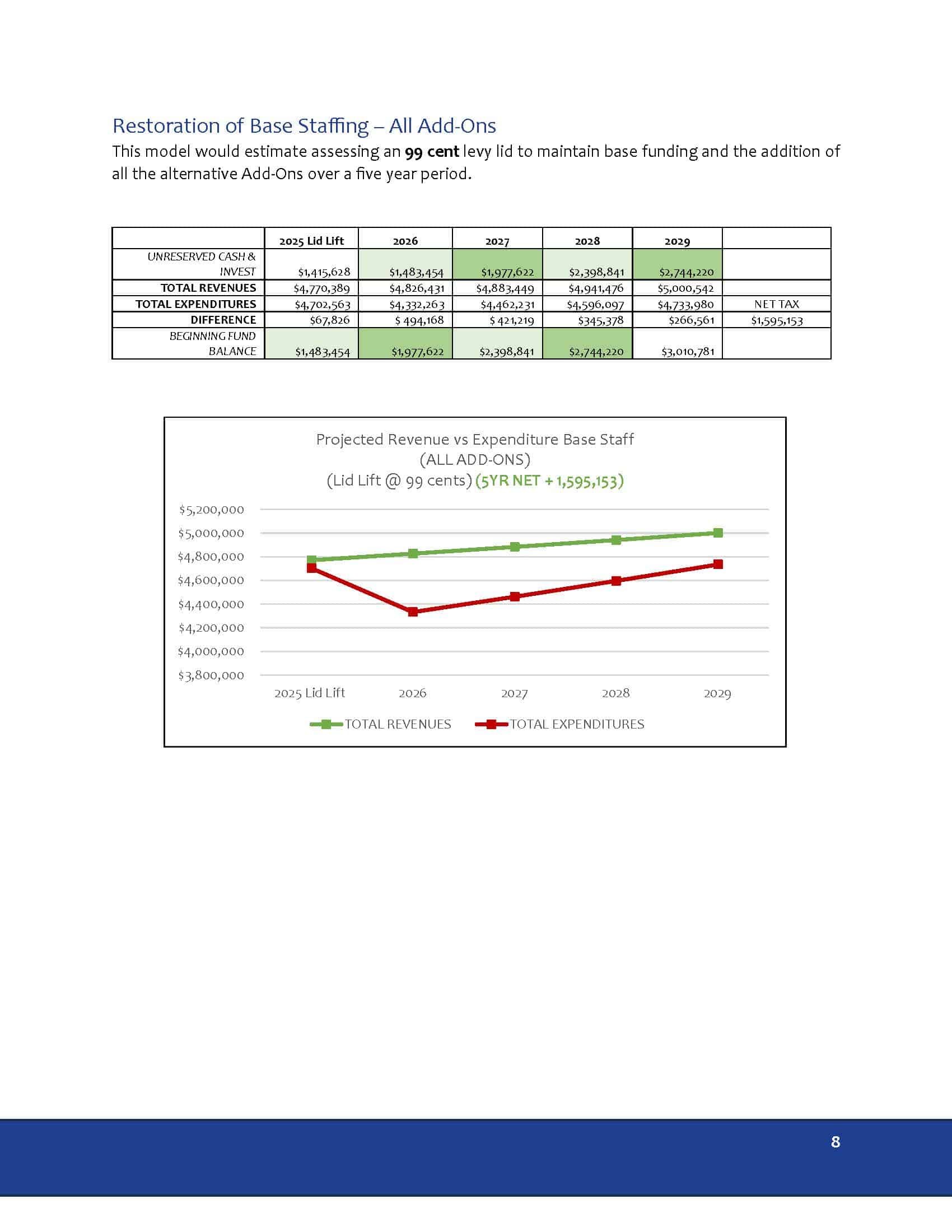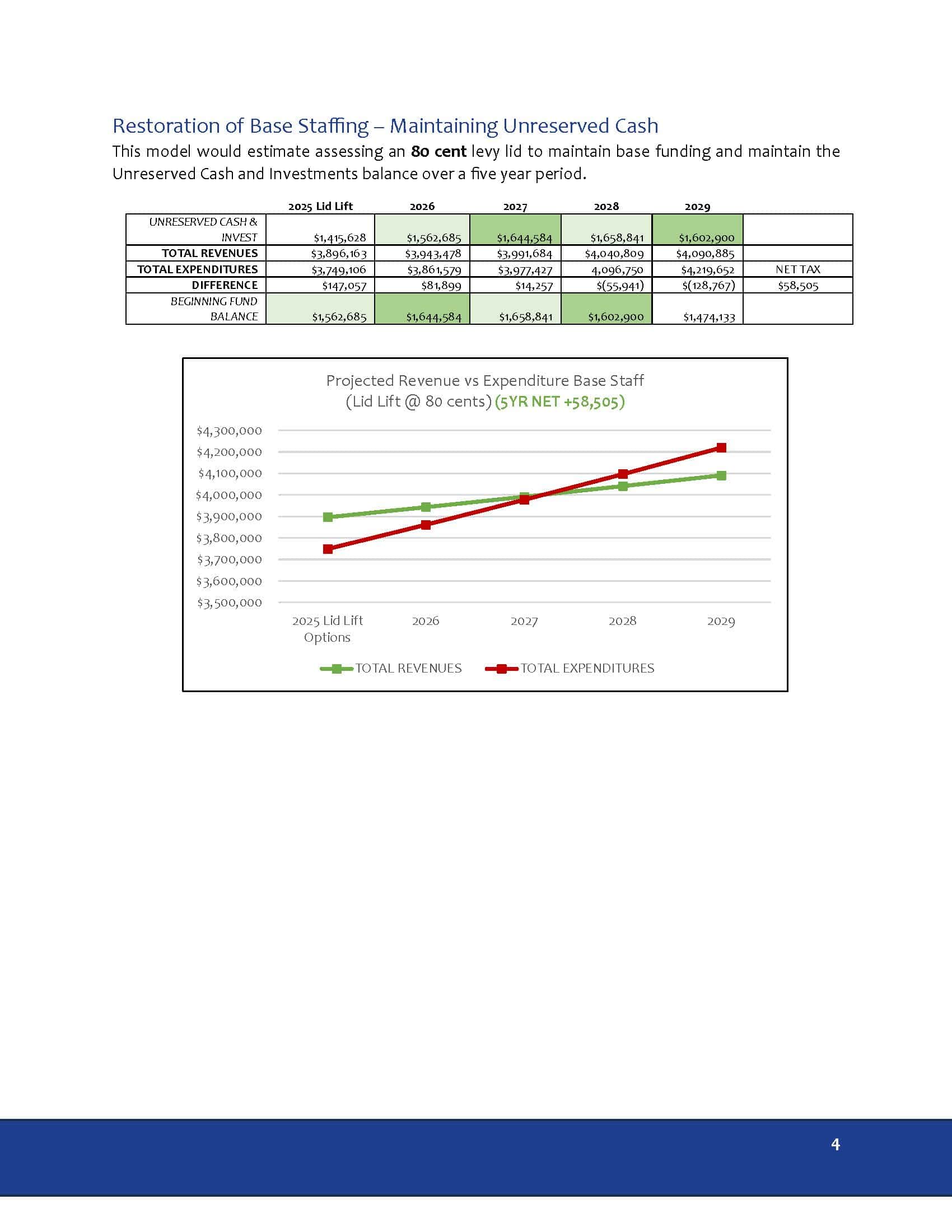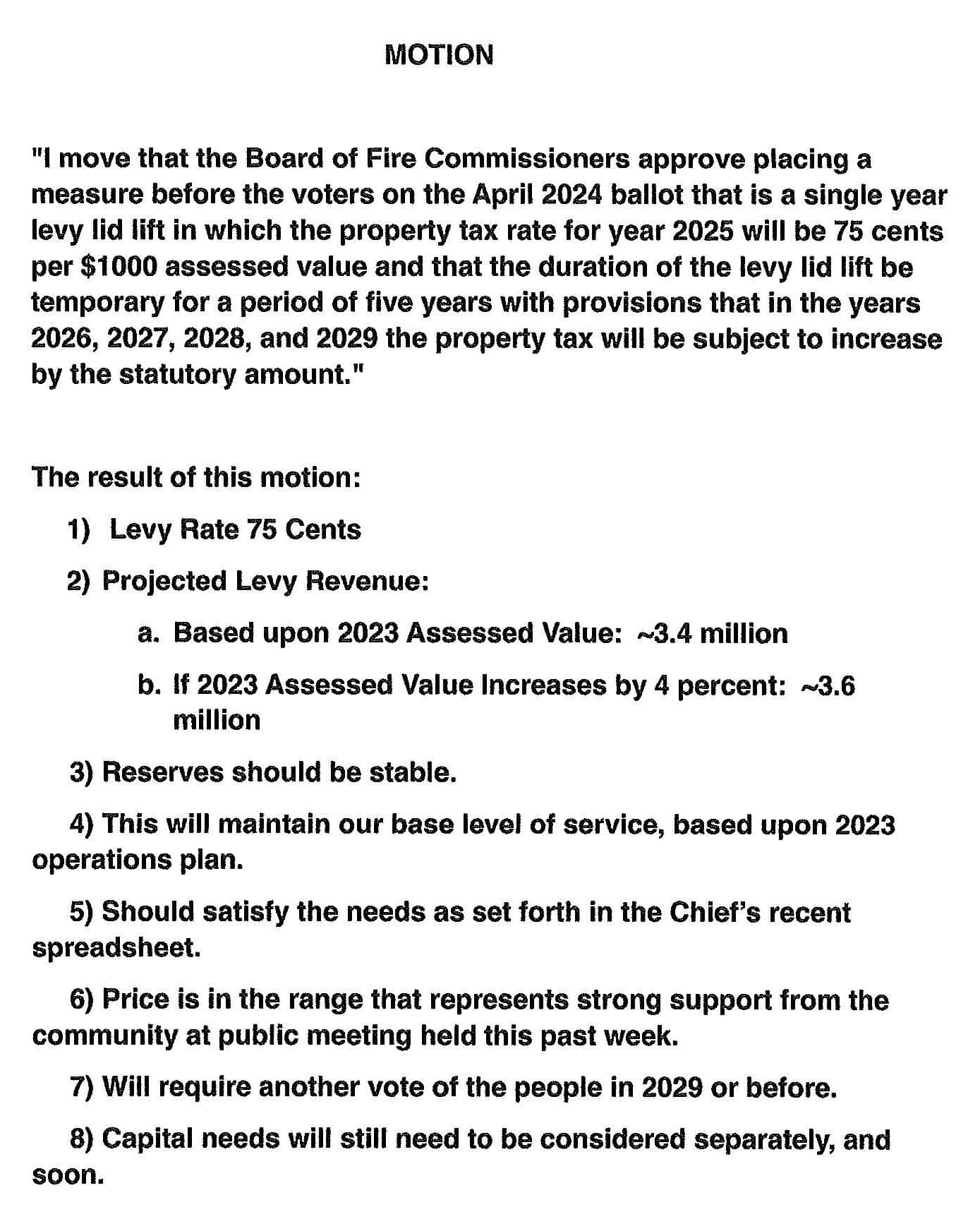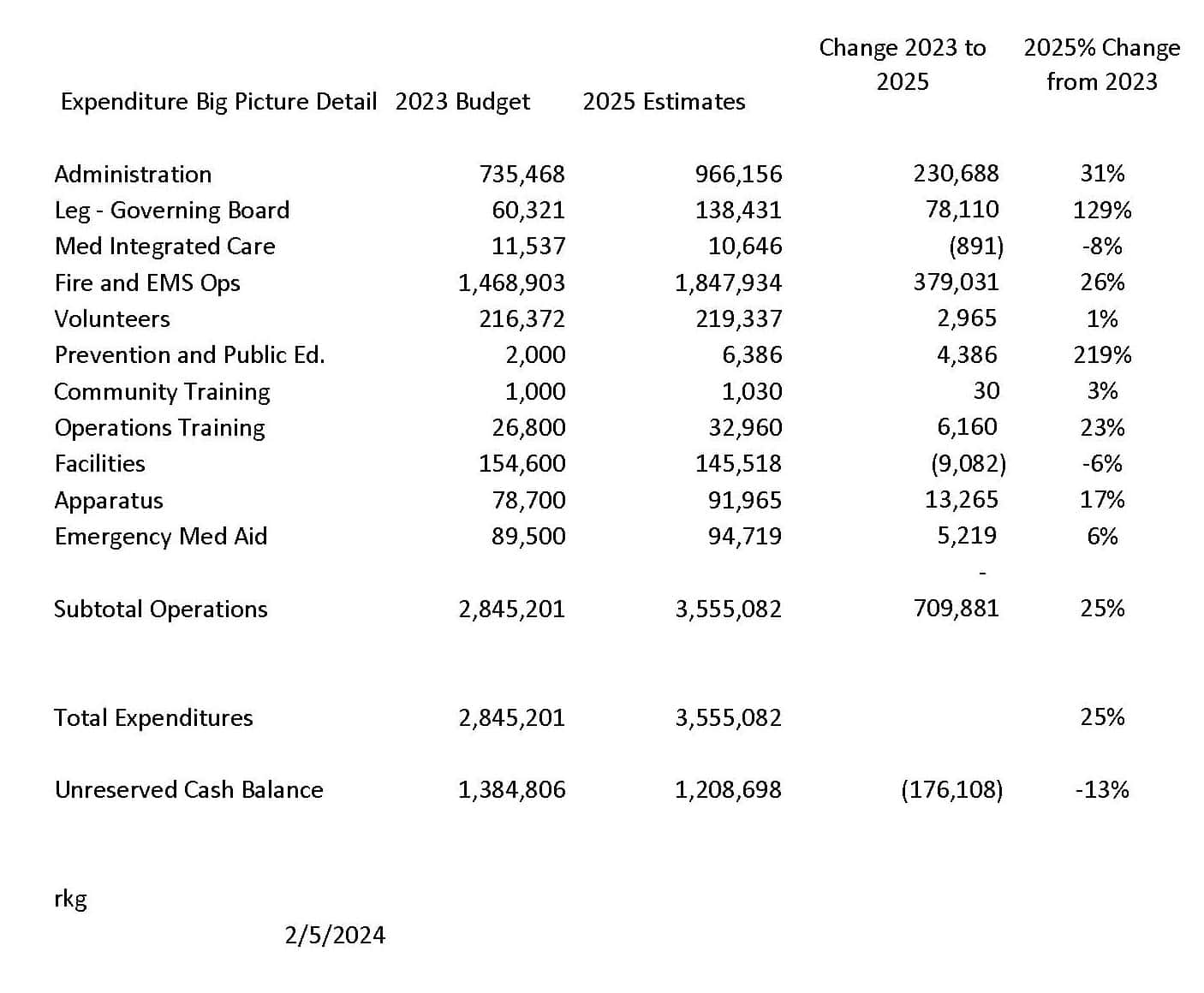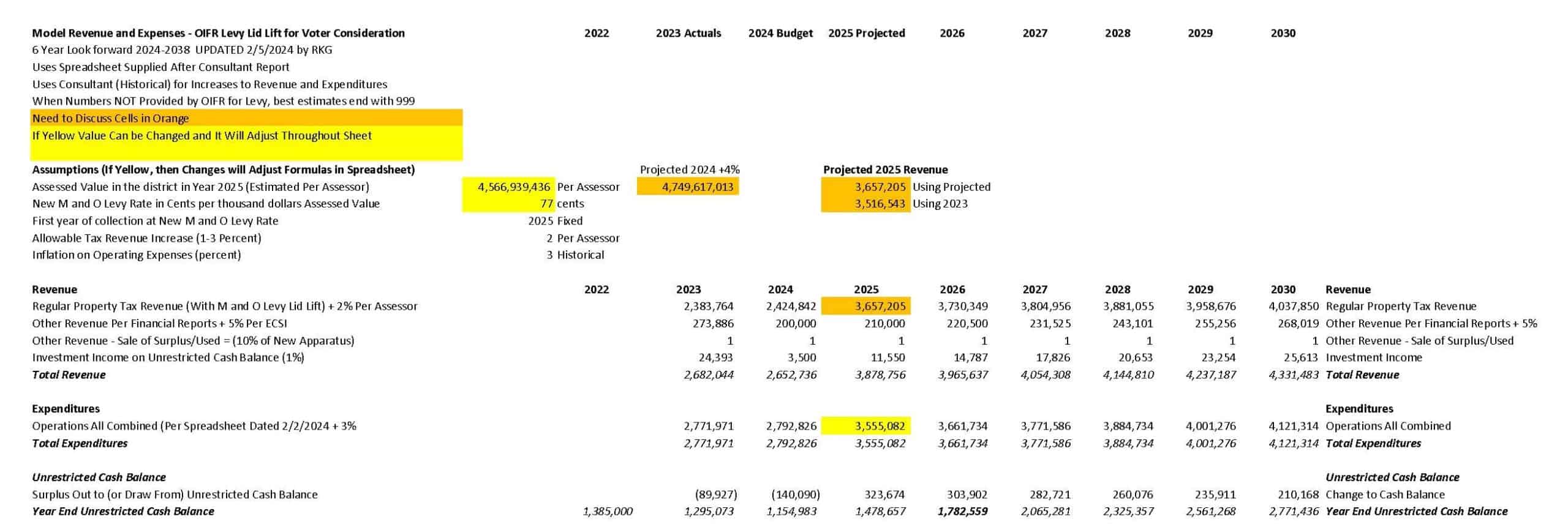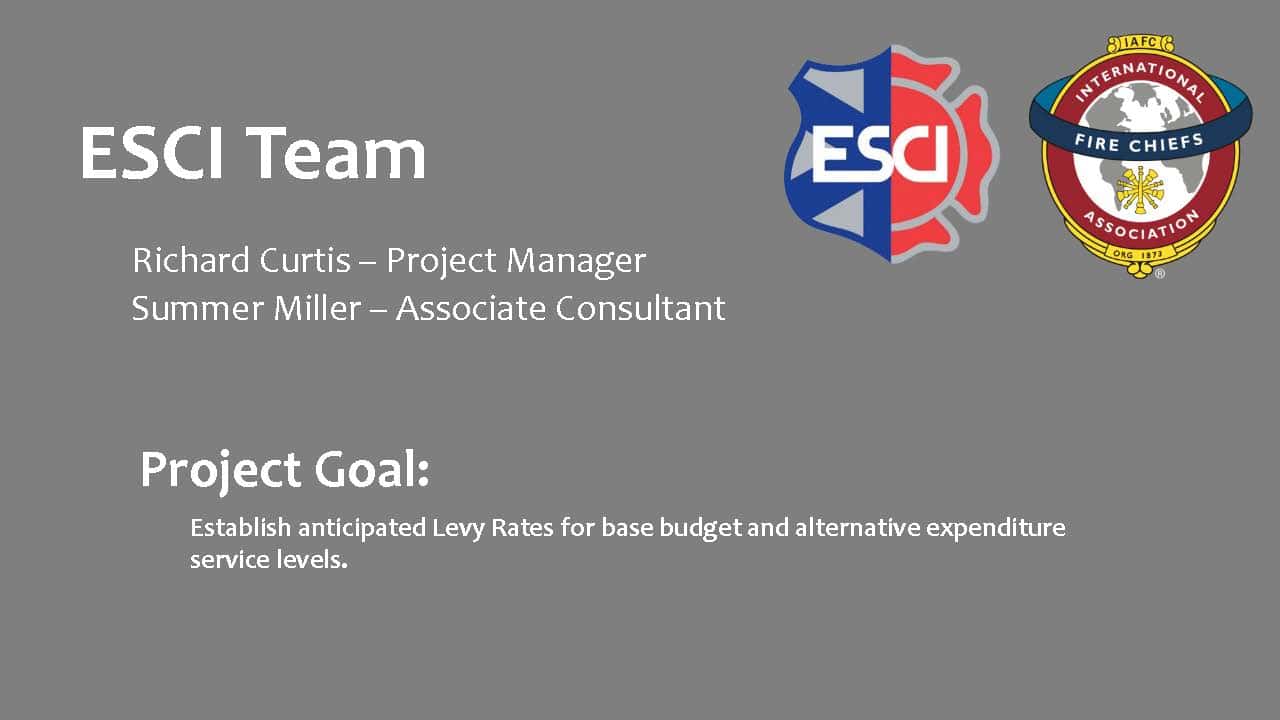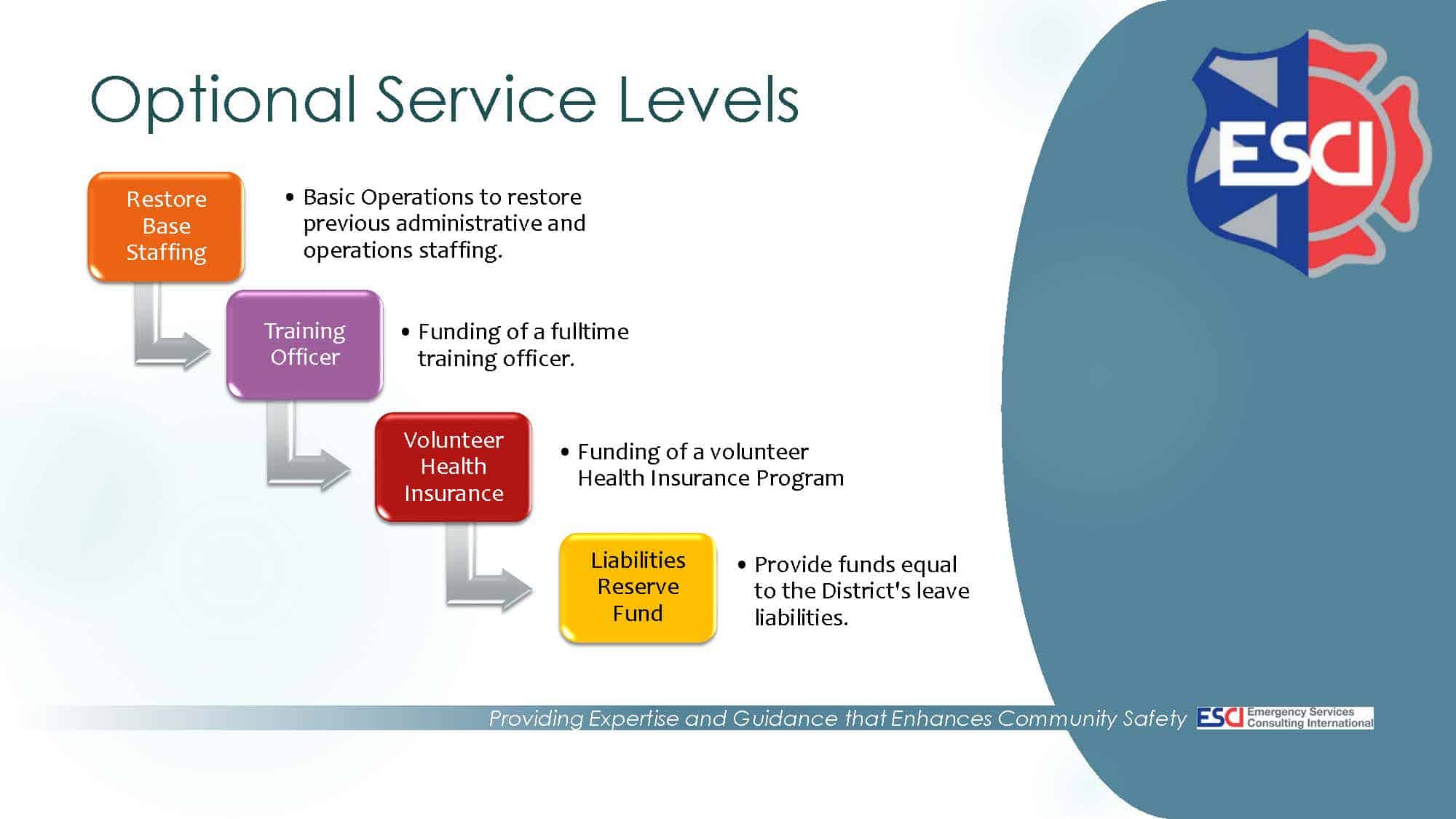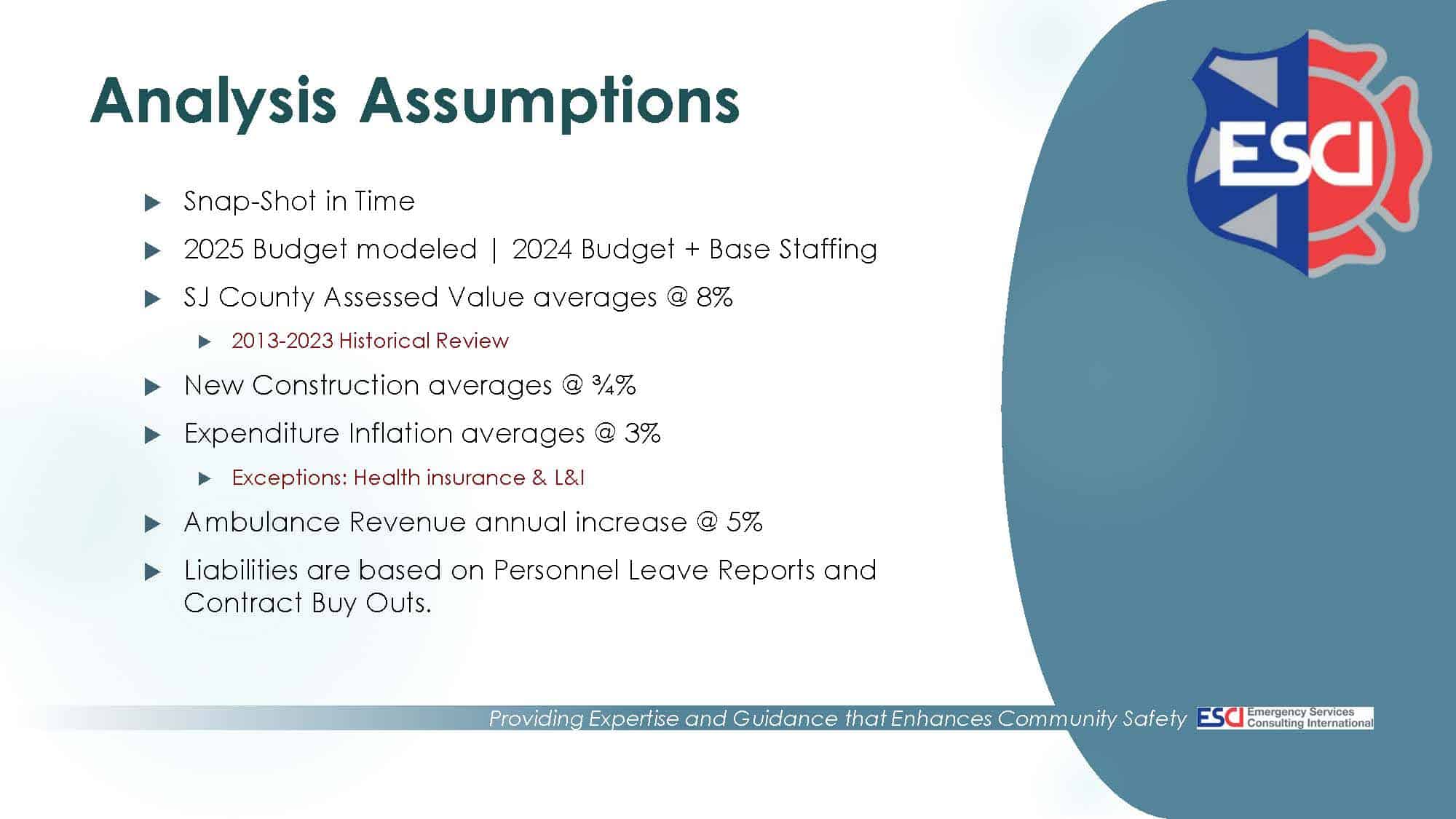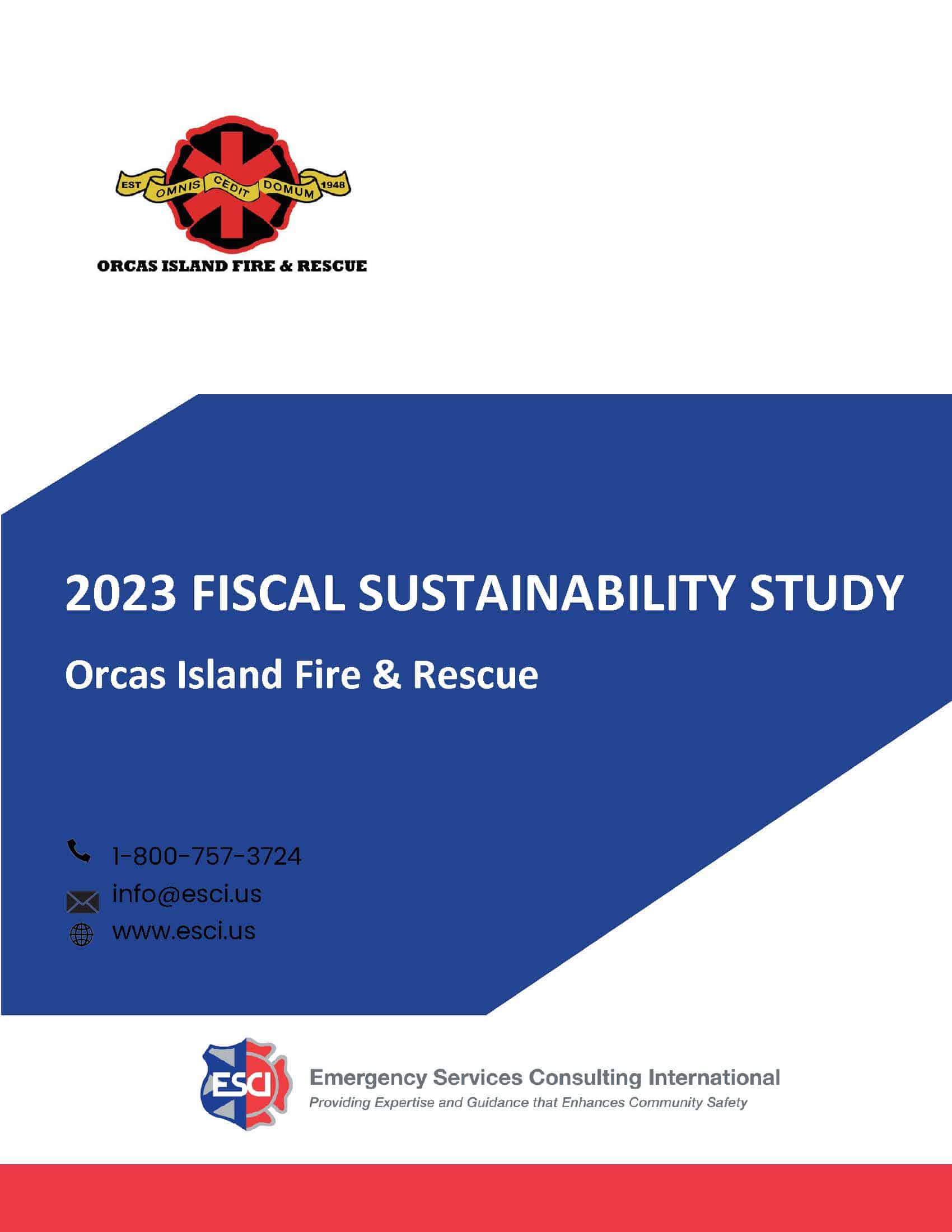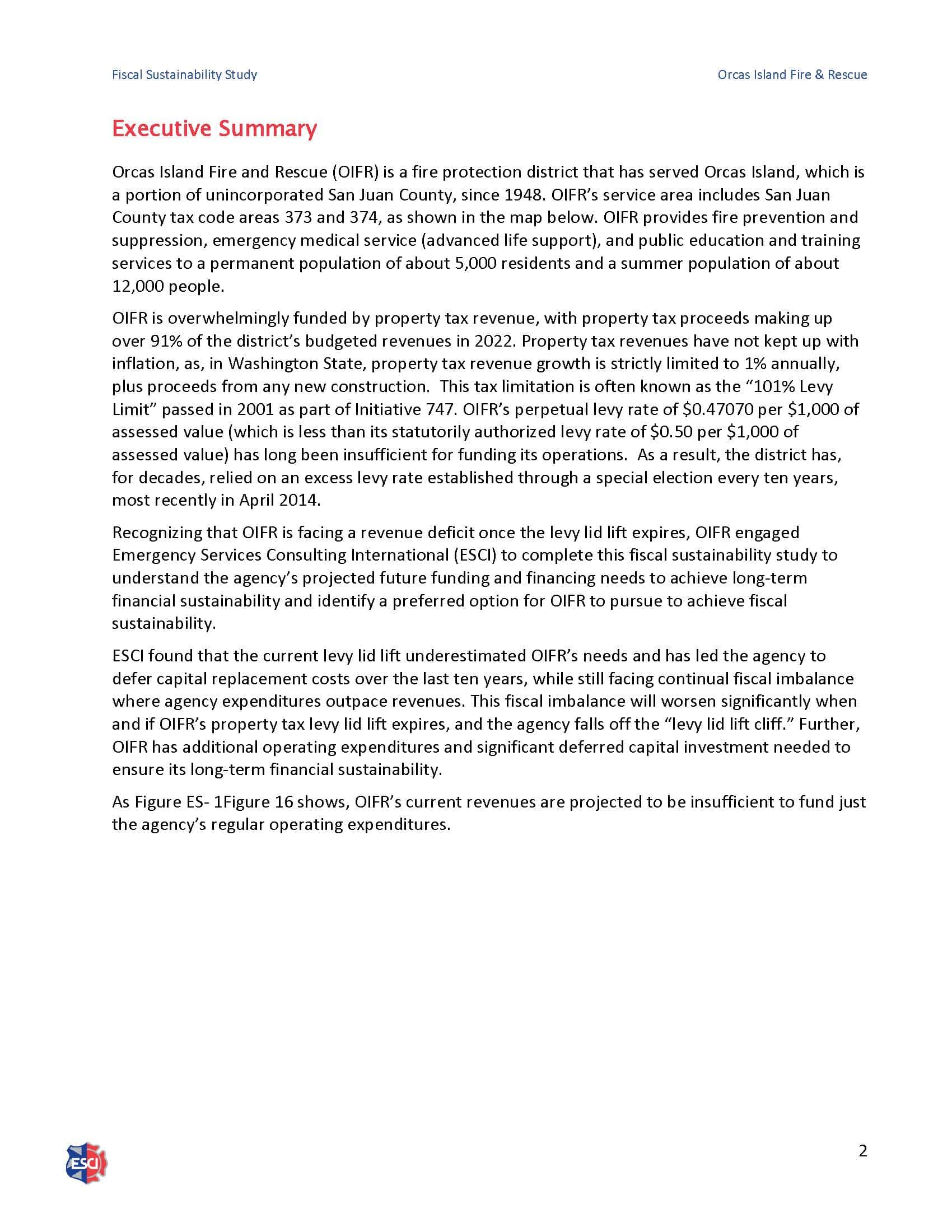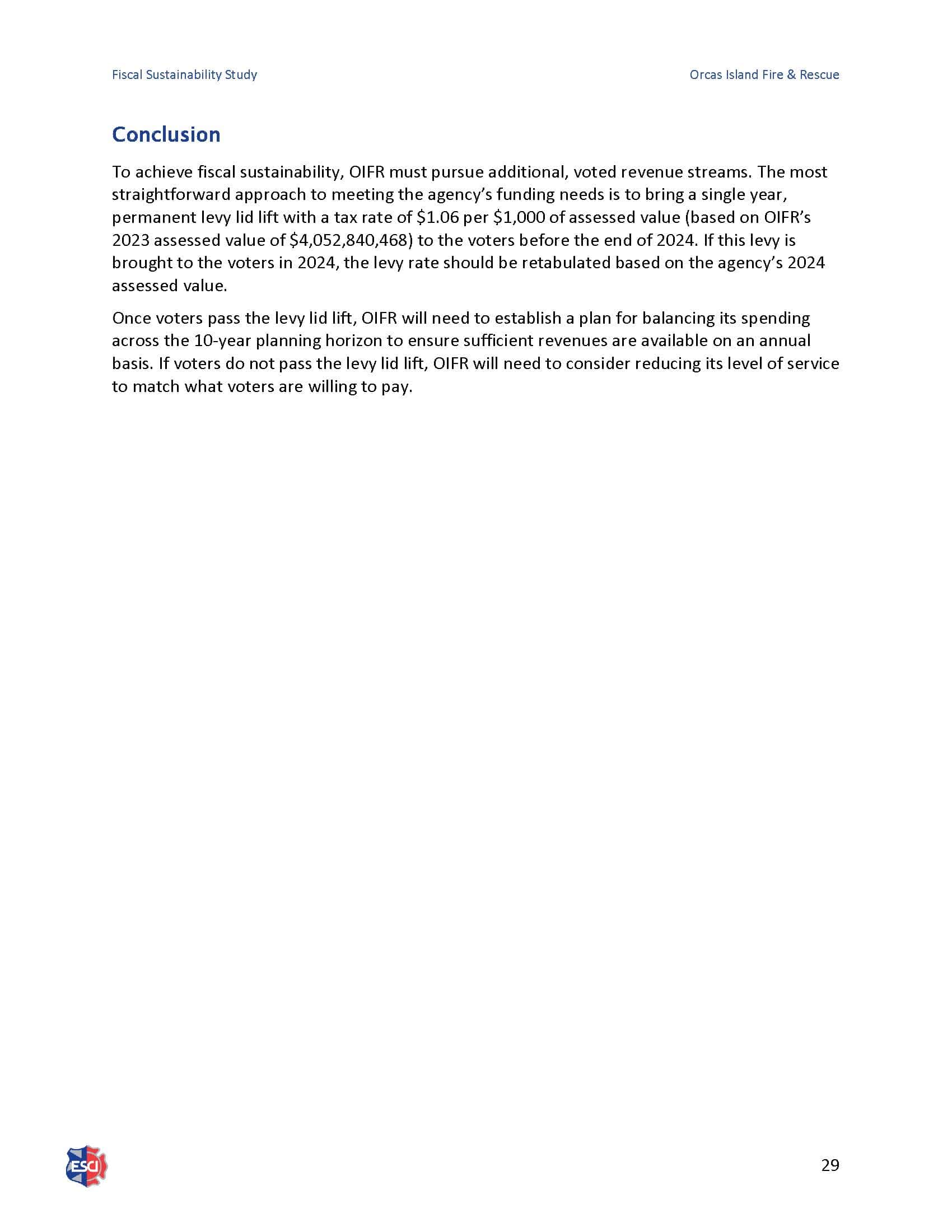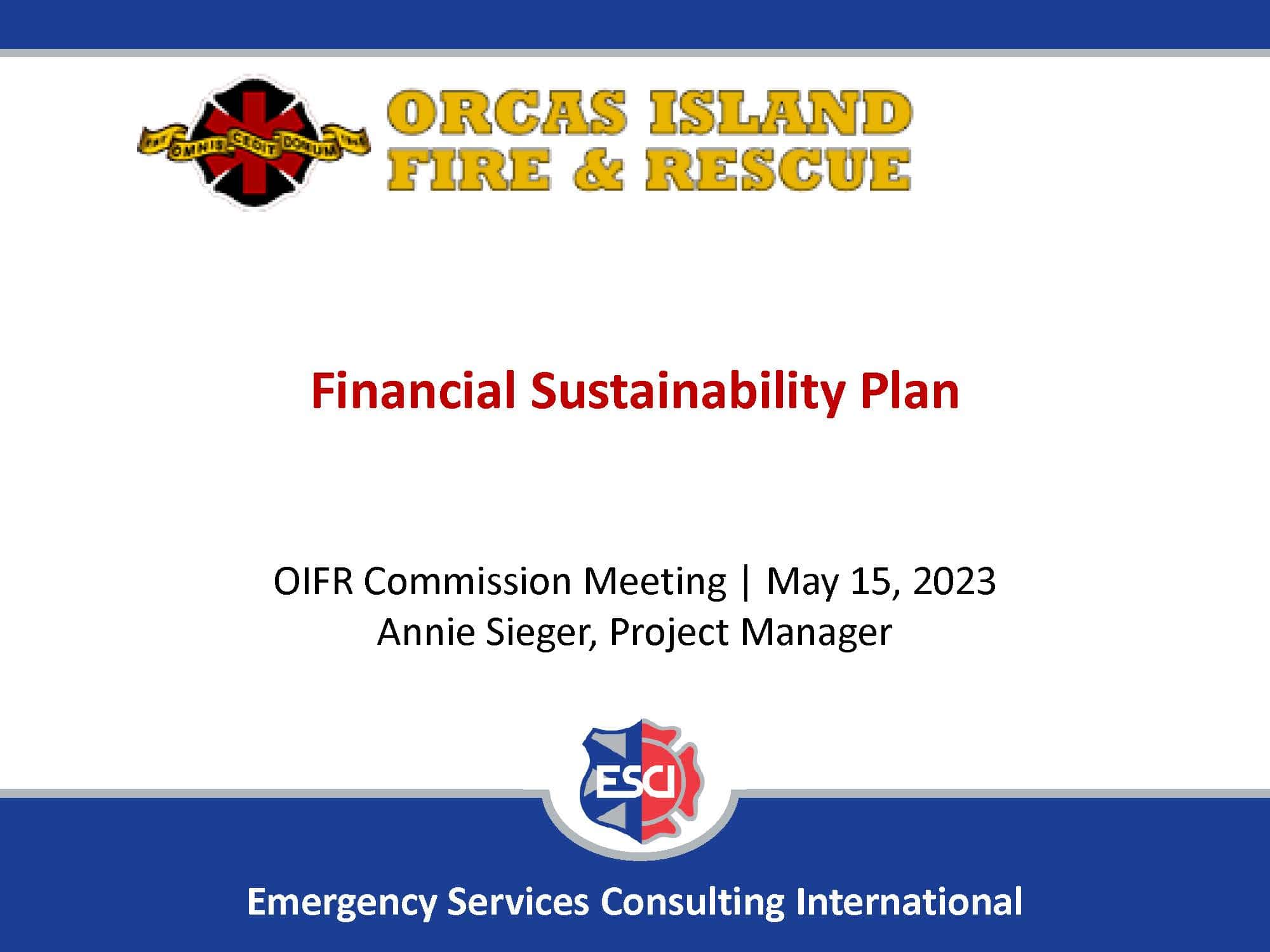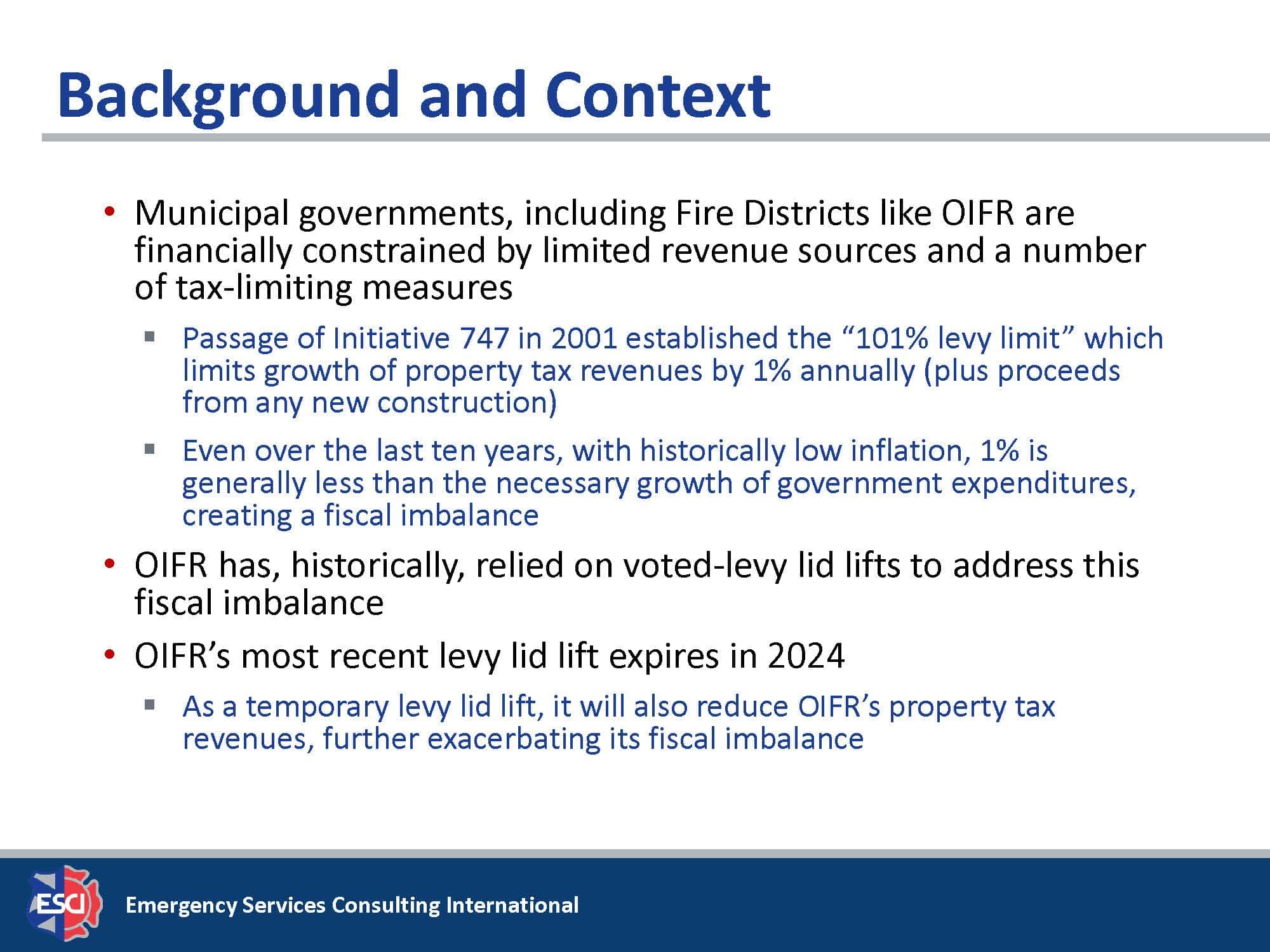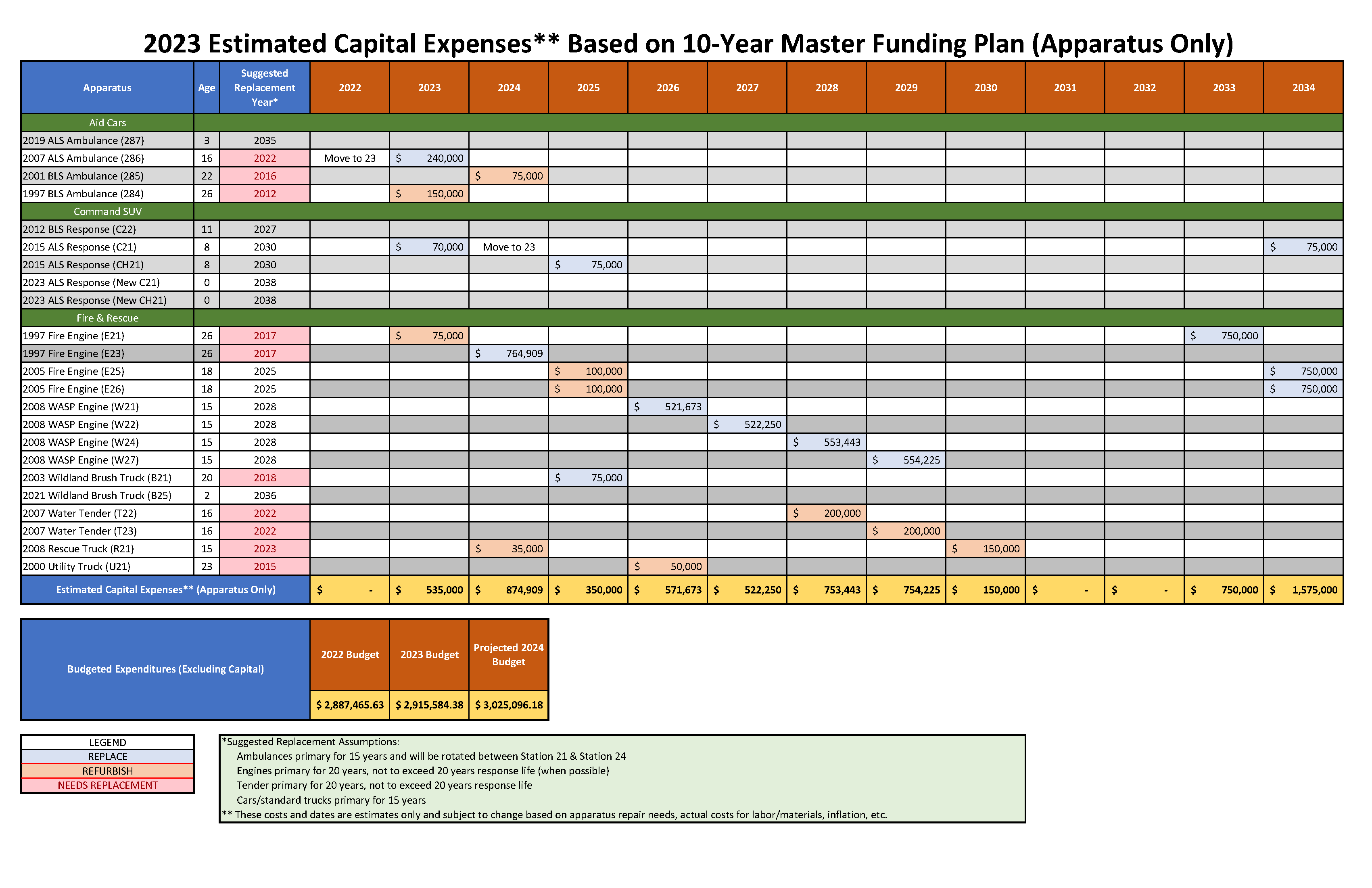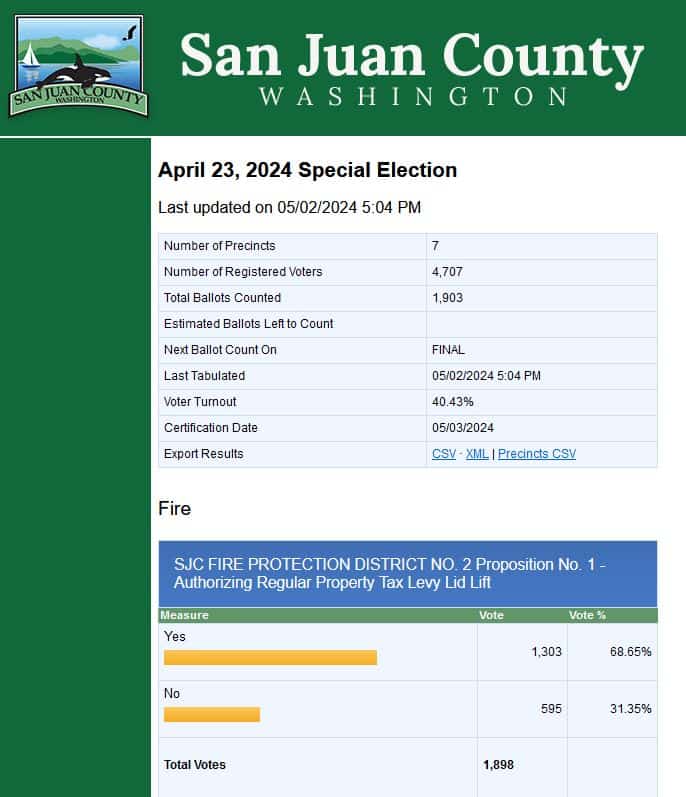
Thank you, for voting!
Orcas voters have approved a temporary five-year tax levy lid lift for the fire department.
Of the 4,707 registered voters, 1,903 cast their ballots in an April 23 special election (40.43 percent voter turnout). 68.65 percent voted in favor of the levy while 31.35 percent voted no.
The levy lid lift is for Orcas Fire and Rescue to provide fire and emergency medical services to our community and visitors. The new levy amount will start in 2025 at 77 cents per thousand assessed value for five years, ending in 2029. The goal is to maintain current staffing and the existing levels of fire and medical services. Future proposals for voter approval to fund OIFR’s capital projects, including replacing or refurbishing apparatus and equipment, are to follow.
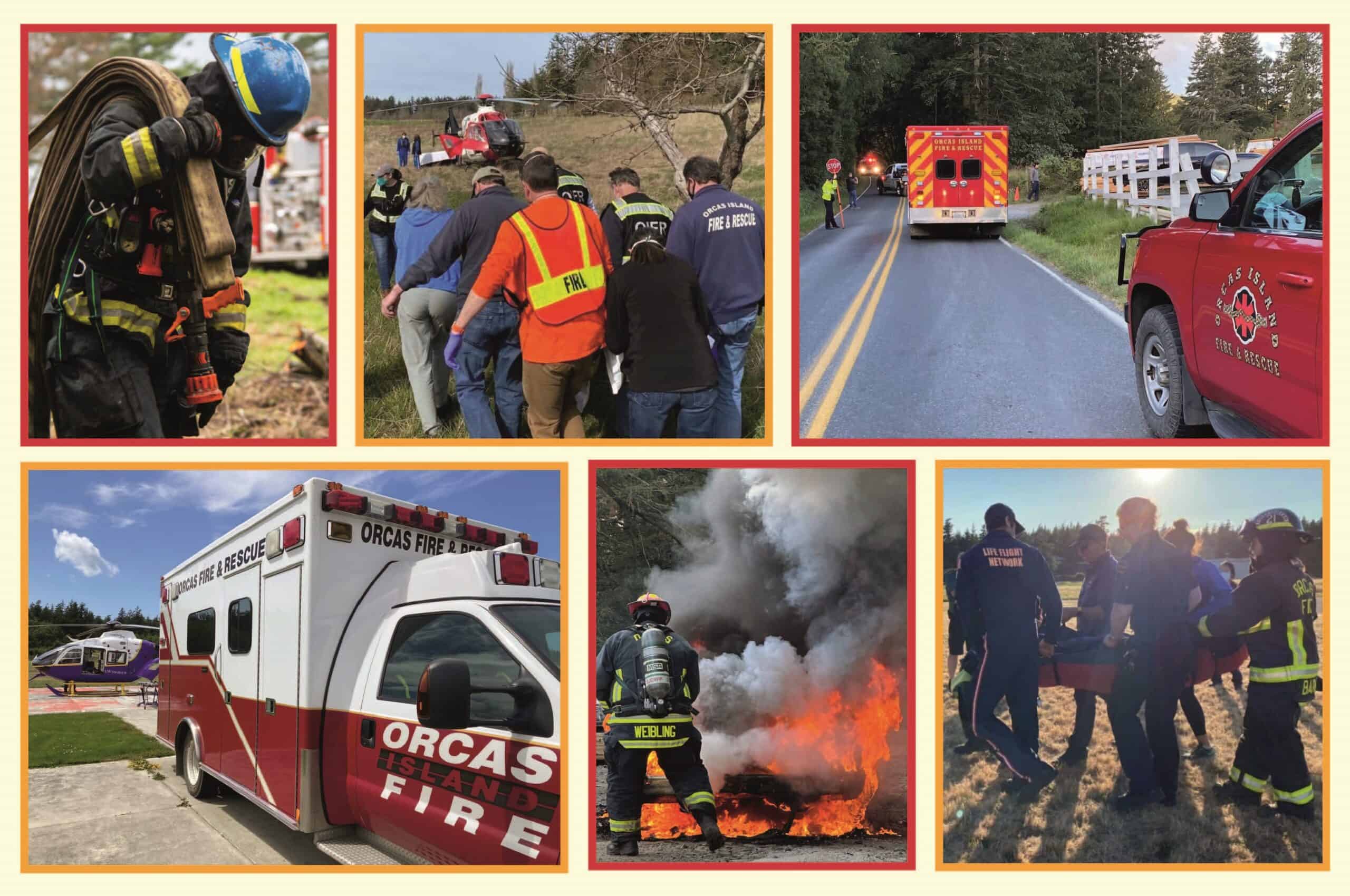
Additional Resources - Click the Links Below
We are happy to discuss funding the fire department with our community. To schedule an educational session, please contact us below.
If you have questions, please ask us or reach out to our Commissioners at bofc@orcasfire.org
Contact: 360-376-2331 or pio@orcasfire.org
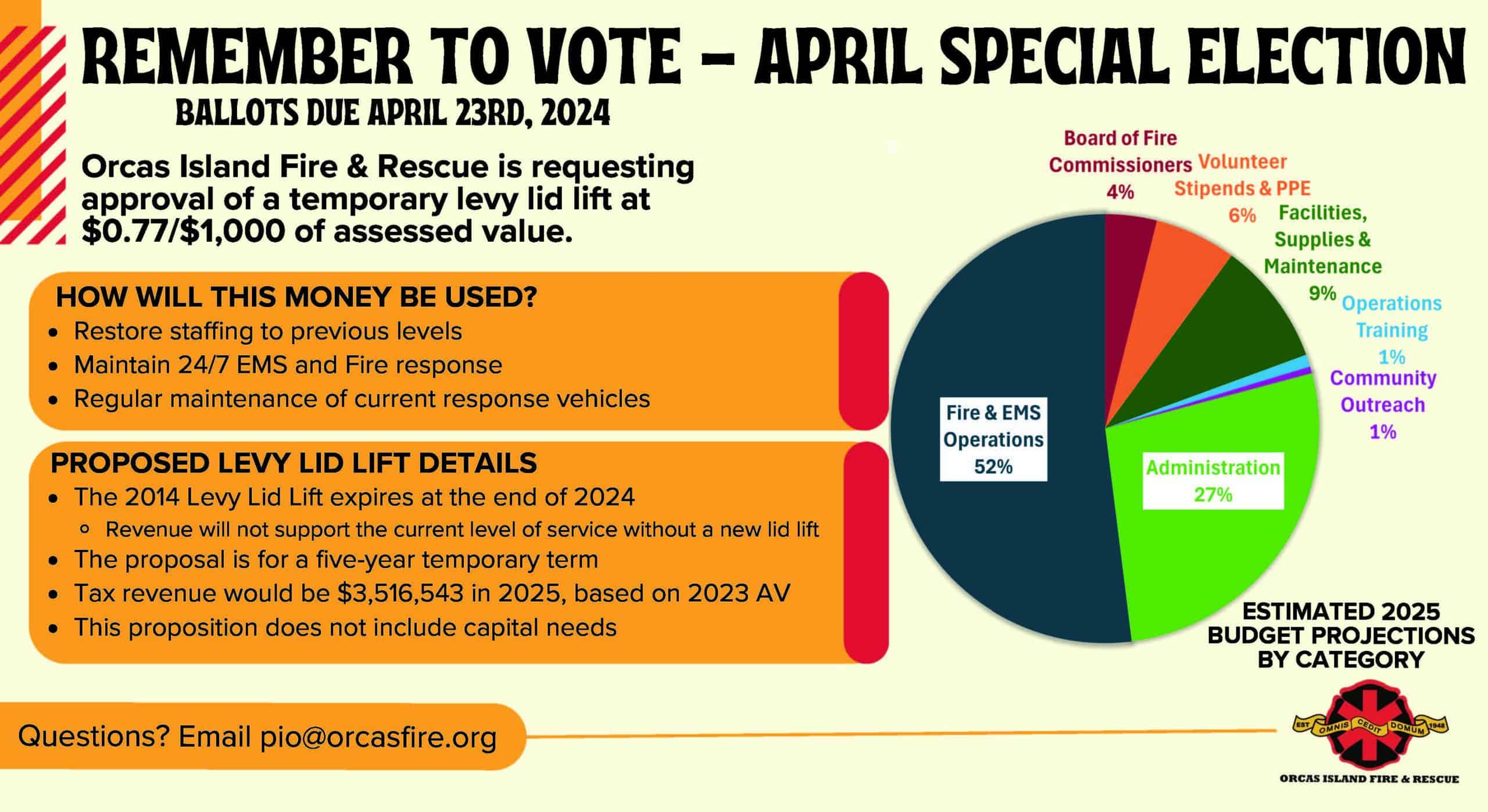
The final motion was for 77 cents per $1000 assessed value from the discussion initiated by the motion by Chair Ehrmantraut shared below.
Click on each image for the complete spreadsheet.
All Levy Documents can be found in the Board Documents Levy Information folder.
2025 Budget Projections DRAFT - Town Hall, February 3, 2024
Click here for the full Levy Budget Projections document.
Emergency Services Consulting International
Click here for ESCI Summary document.
Click here for the ESCI Options Presentation.
About ESCI: As the consulting firm of the International Association of Fire Chiefs, Emergency Services Consulting International has reliably met the needs of emergency services agencies for nearly fifty years. ESCI has the ability to draw upon an international network of resources to assist with fire, EMS, law enforcement, and homeland security agencies to plan and adapt to future needs.
ESCI has completed numerous public safety, police, fire, and EMS studies utilizing our highly qualified staff. ESCI has a working knowledge and understanding of contemporary fire, EMS, and police organizations and the complexity of current delivery systems, as well as our ability to utilize advanced analytical technology and methodology to ensure accurate observations and recommendations. Learn more by visiting their website.
ESCI Summary Lid Lift Options - Februrary 5, 2024
ESCI Review of Lid Lift Options - February 2, 2024
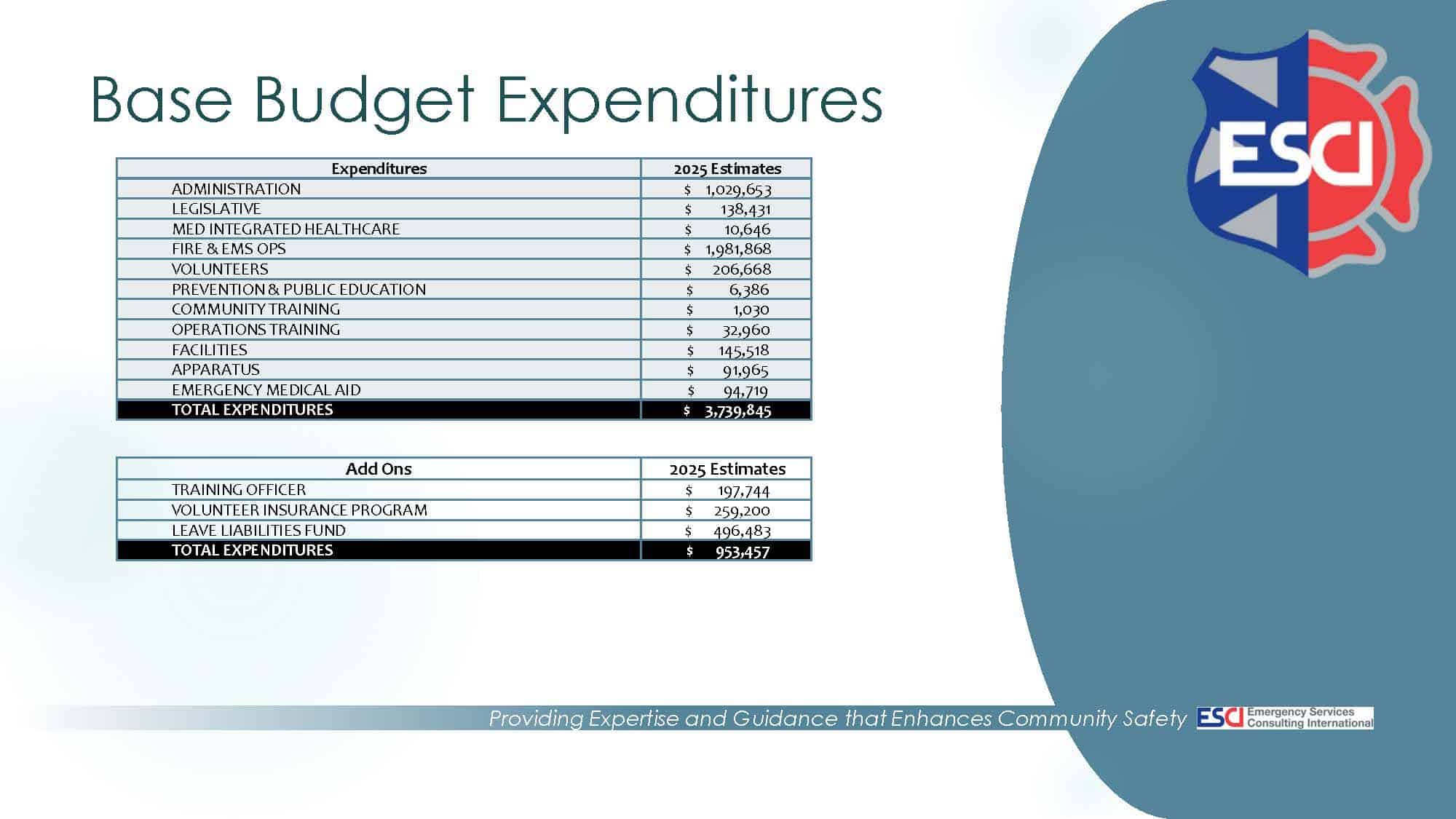
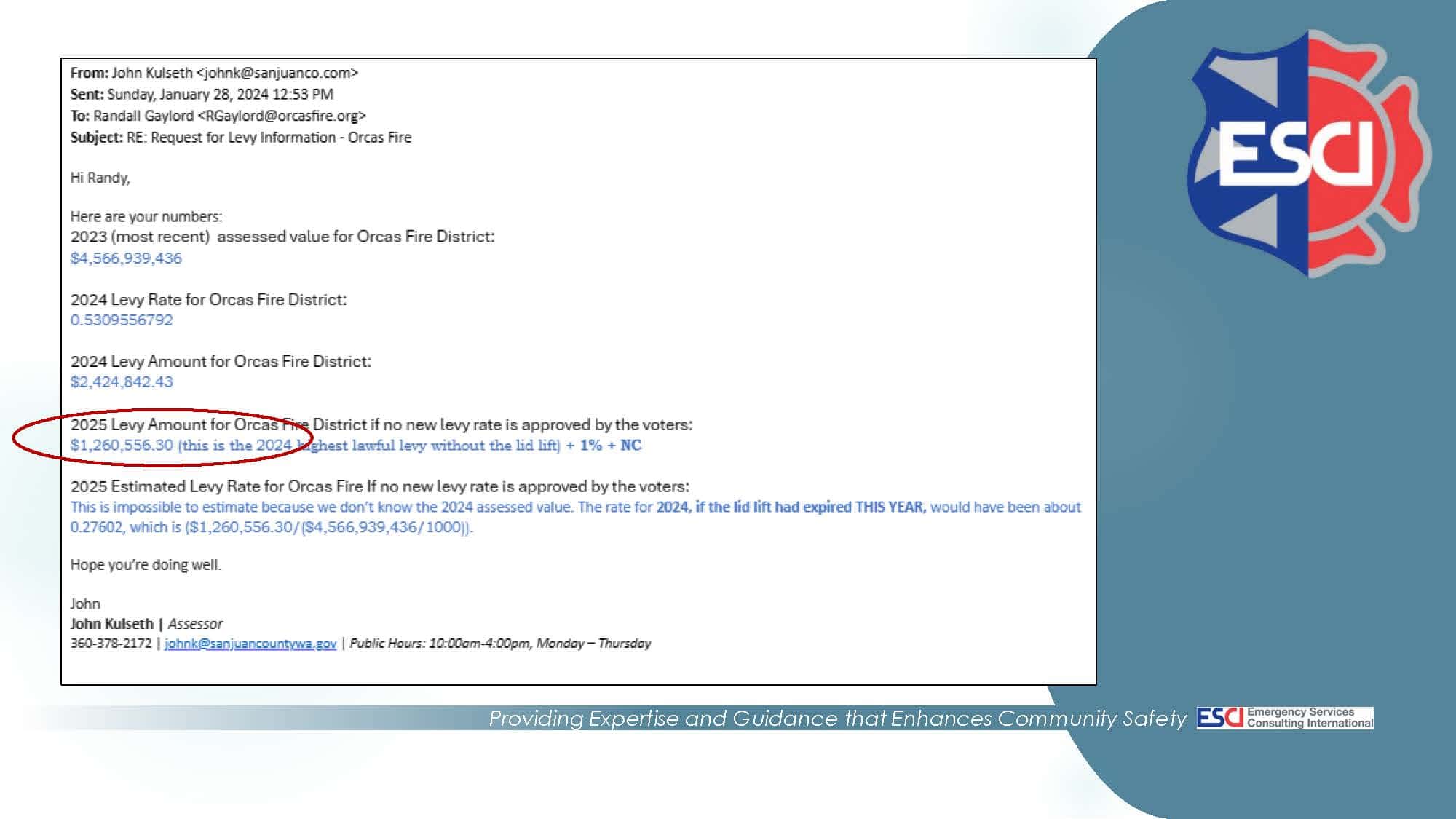
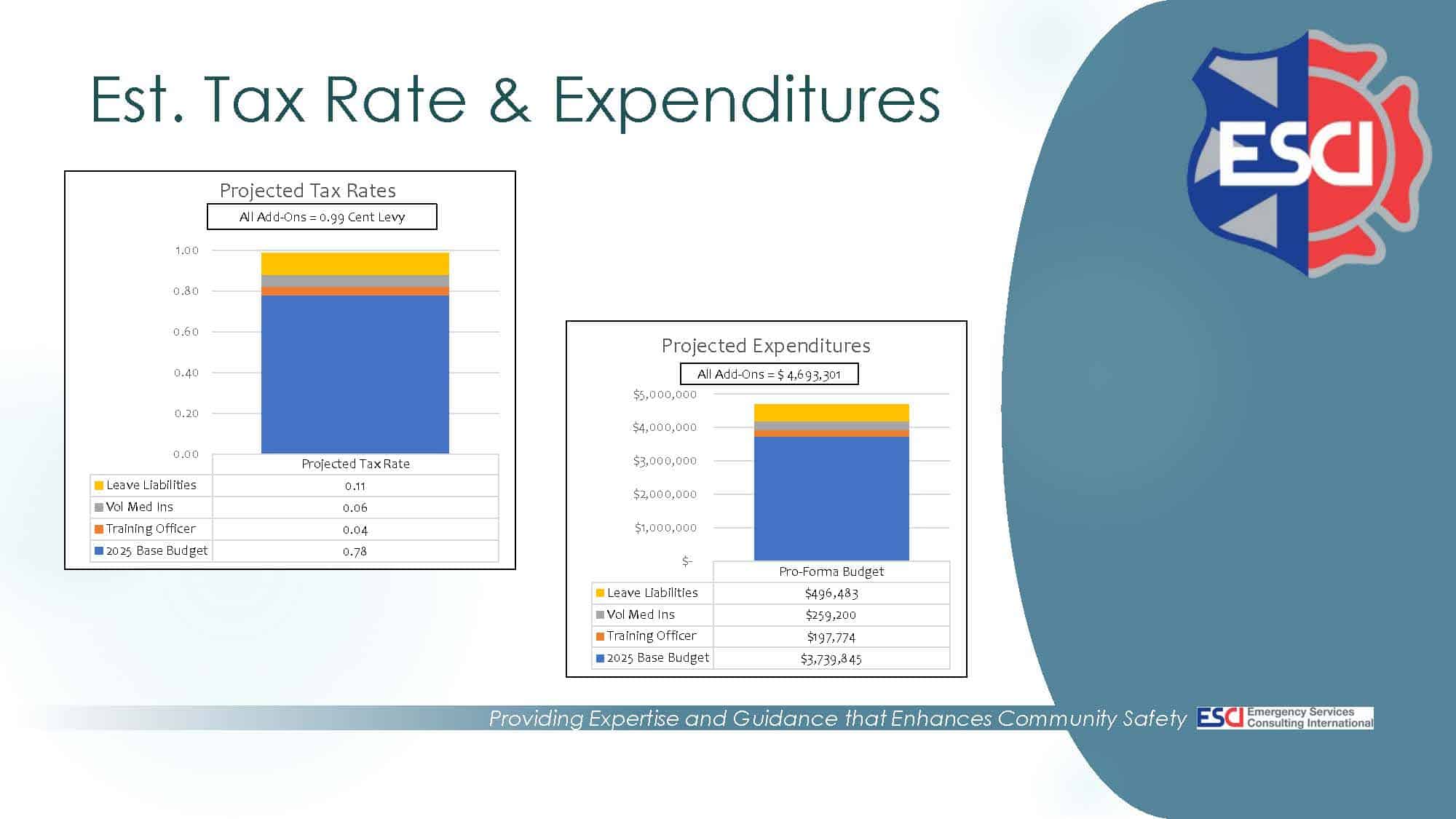
Additional Resources - Click the Links Below
2023 Levy Lid Lift Research and Information Below
ESCI Final 2023 Powerpoint Presentation
Excerpts from the Financial Sustainability Plan
Presented at the OIFR BOFC Meetings | March 20, 2023, April 27th, 2023, & May 15, 2023
Annie Sieger, Project Manager, Emergency Services Consulting International
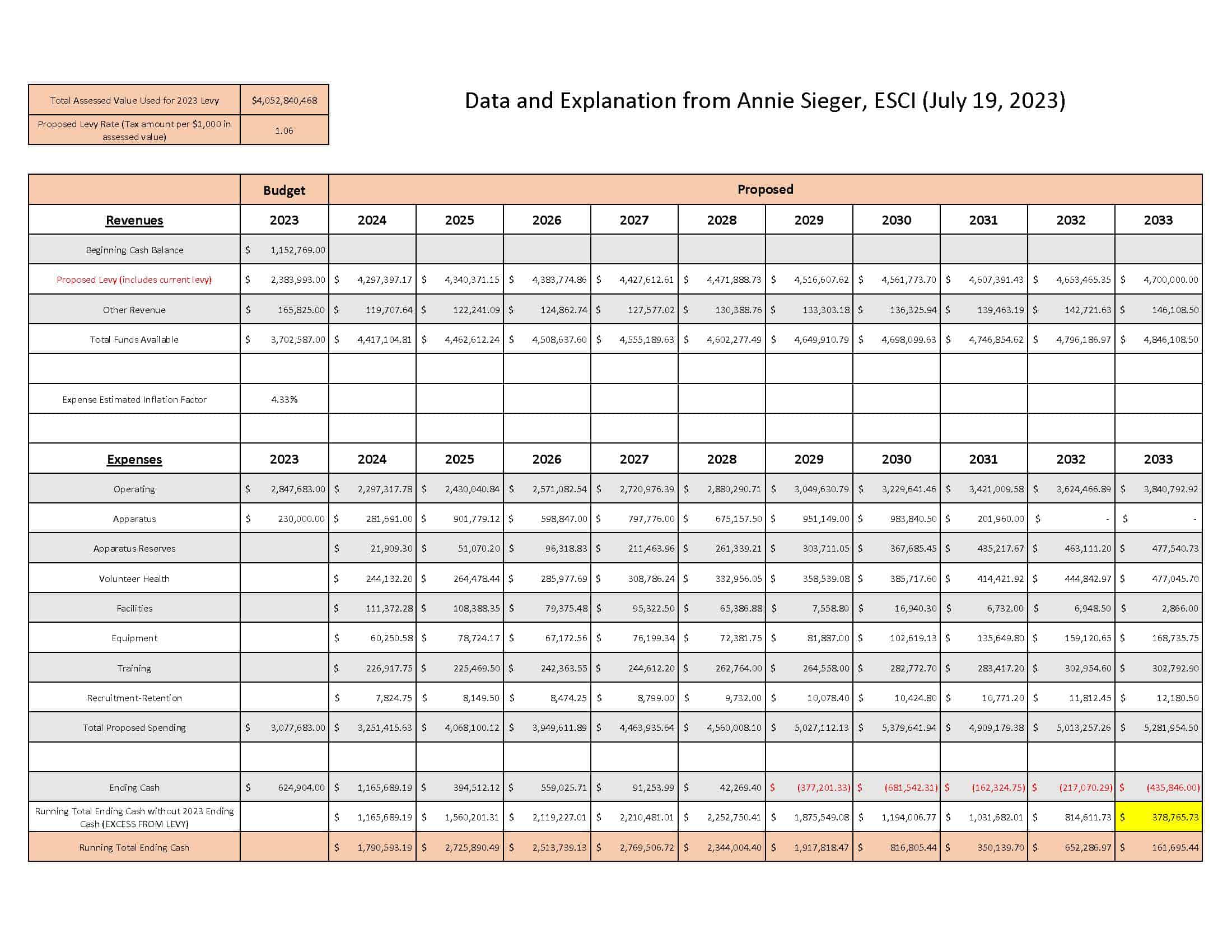
Data and Explanation from Annie Sieger - ESCI (July 19, 2023)
Calculated estimates for a ten-year time horizon, 2023 to 2033 (did not include 2034).
Projected other revenue sources (including other taxes, intergovernmental revenues, charges for goods and services, and miscellaneous revenues) based on historical revenues and did not include irregular or insecure sources.
Because revenues are in nominal dollars (that is, reflect the actual dollars to be collected in any given year rather than being in 2023$, which would reflect their purchasing power in 2023), we also needed to put expenditures into nominal dollars. This includes using an inflation factor. We used the average inflation based on the implicit price deflator (IPD). IPD measures the price of a much wider group of goods and services than the consumer price index and is, therefore, commonly used by the Washington State government to adjust state economic and revenue data. Expected inflation based on IPD is 4.33% year over year. I cannot predict what inflation will be in the future; however, given the current inflationary environment, my professional opinion is that the 4.33% factor is appropriate.
Regular operating expenses will increase due to ongoing increases in demand for services, not just inflation. My analysis assumes that per capita service costs will stay the same but that the total cost will increase with population and development. Washington State Office of Financial Management and San Juan County expect Orcas Island’s population to continue to increase over the next ten years, so demand for services will increase commensurately.
OIFR is currently in a position where they have a large amount of near-term apparatus needs to pay for in a short period of time. This is challenging for them and the public because it means more dollars than average are needed to address those needs in this window. Many governments smooth those costs over time by reserving funds to pay for those needs in the future rather than needing to come up with cash or financing. ESCI’s analysis includes annual contributions to apparatus reserves that amortizes the cost of those investments over their lifecycles (that is, you would reserve “1/years of life * apparatus replacement cost” per year up until its replacement, at which time OIFR would have reserved its full replacement cost.
Based on these results, we see in L26 that the cumulative surplus in the levy is only estimated at about $400,000. This is a tiny surplus on the overall levy collections (less than 1%). Given the assumptions in the model, this is almost too precise (that is, it isn’t enough contingency). However, because OIFR currently has $624,904 in projected ending fund balance for 2023, I was comfortable moving forward with this slim margin.
It is important to recognize that financial modeling is intended to generate planning level estimates that rely on assumptions. These assumptions are, by definition, uncertain and different assumptions will lead to different results.
Municipal governments, including Fire Districts like OIFR are financially constrained by limited revenue sources and a number of tax-limiting measures
- Passage of Initiative 747 in 2001 established the “101% levy limit” which limits growth of property tax revenues by 1% annually (plus proceeds from any new construction)
- Even over the last ten years, with historically low inflation, 1% is generally less than the necessary growth of government expenditures, creating a fiscal imbalance
OIFR has, historically, relied on voted-levy lid lifts to address this fiscal imbalance
OIFR’s most recent levy lid lift expires in 2024
- As a temporary levy lid lift, it will also reduce OIFR’s property tax revenues, further exacerbating its fiscal imbalance
- OIFR has faced historical fiscal imbalance that will worsen if and when it falls of the “levy lid lift cliff.”
In April 2014, OIFR asked voters to enact a “single-year levy lid lift" to $1.05, with a 10-year term.
- Passed with 62.22% of the vote.
- Only increased revenues very slightly over the ten-year period.
- The ballot measure did not state that it is a permanent lift, which means it is subject to the levy lid lift cliff.
- If a new levy lid lift is not enacted in 2024, OIFR’s levy will revert to what it would have been without the lid lift prior to 2014.
Revenue With & Without the 2014 Levy Lid

Historical Revenues, 2008 to 2022 (2023$)
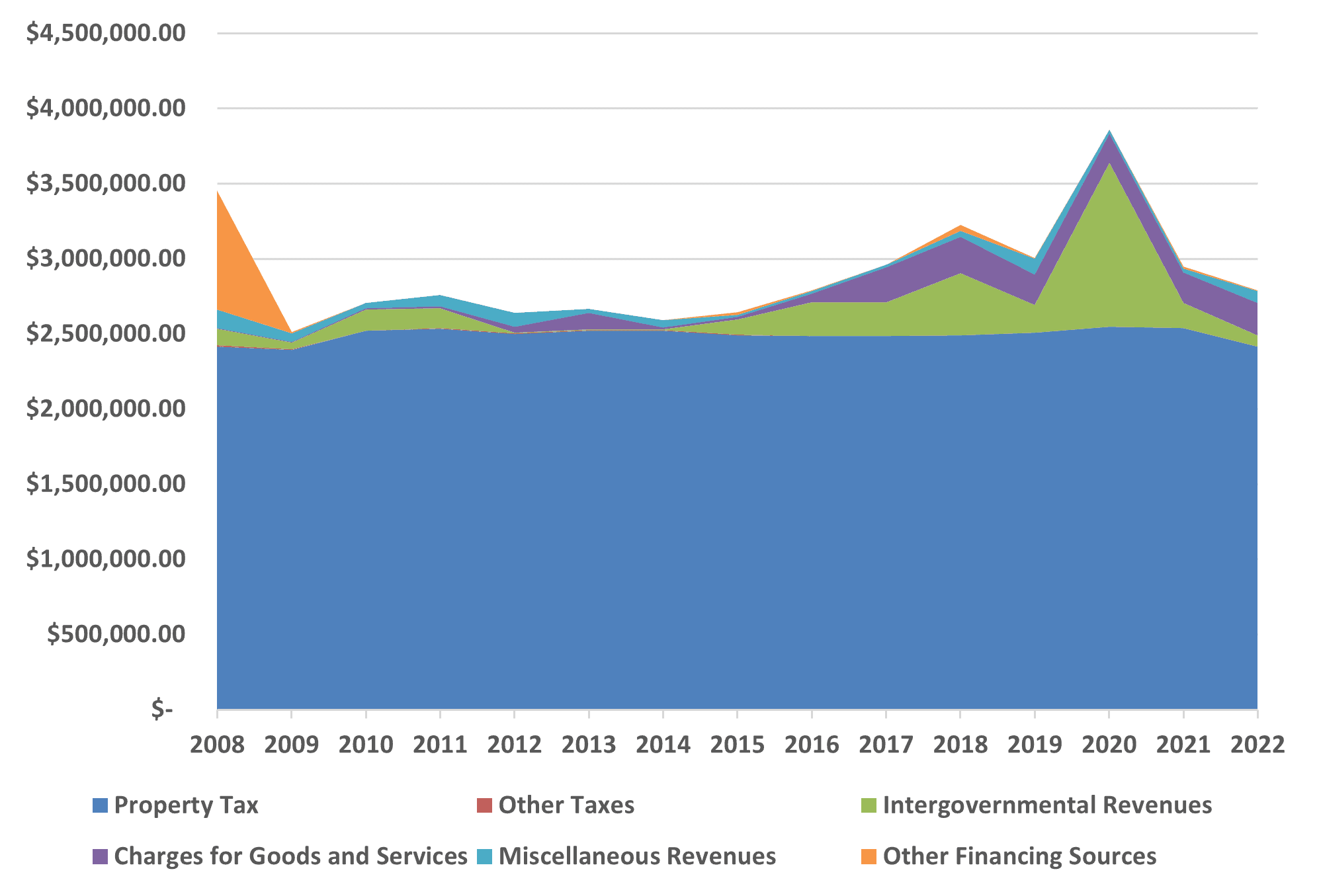
Historical Expenditures, 2008 to 2022 (2023$)
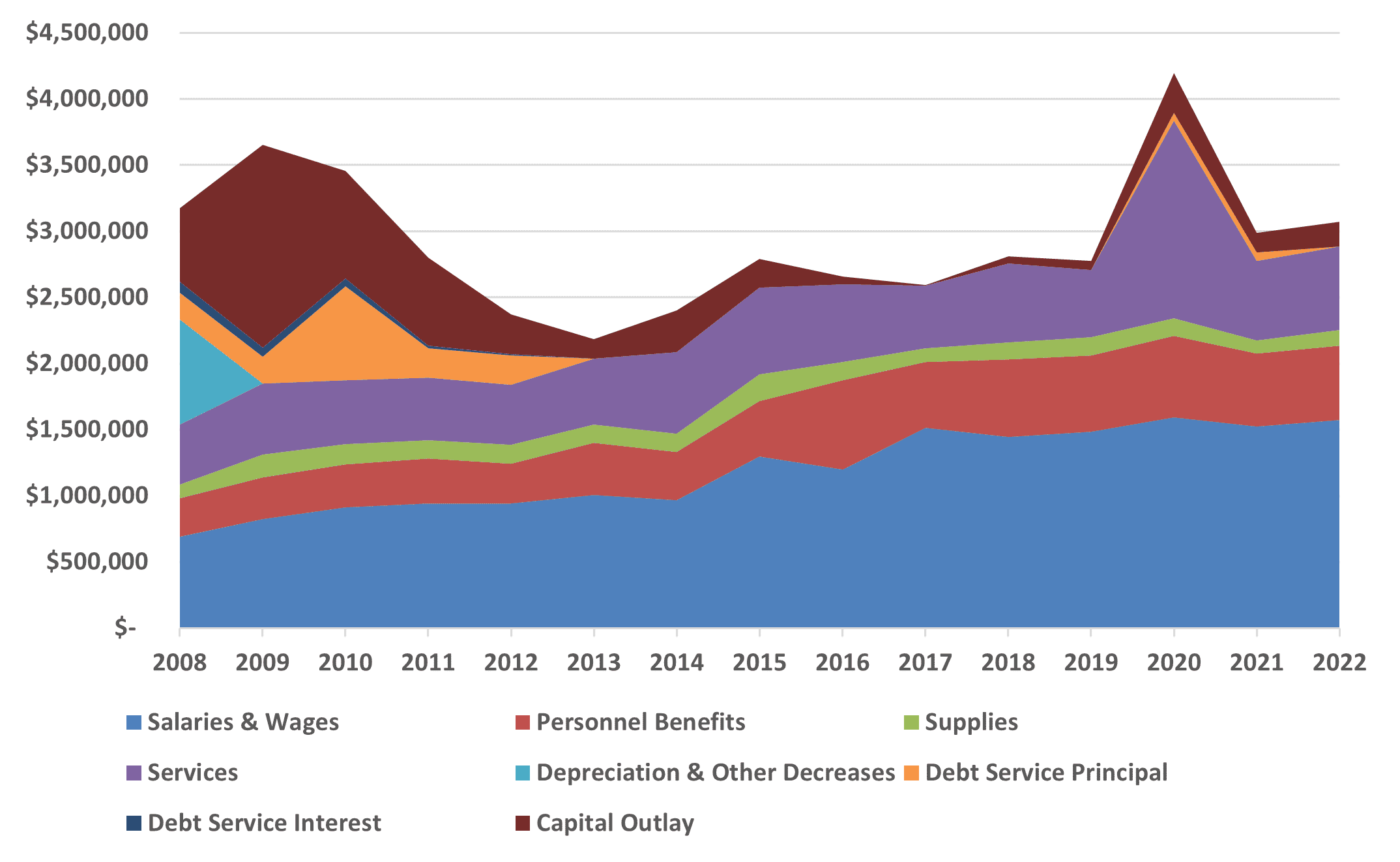
Historical Revenues vs. Expenditures, Total and Per Capita, 2010 to 2022 (2023$)
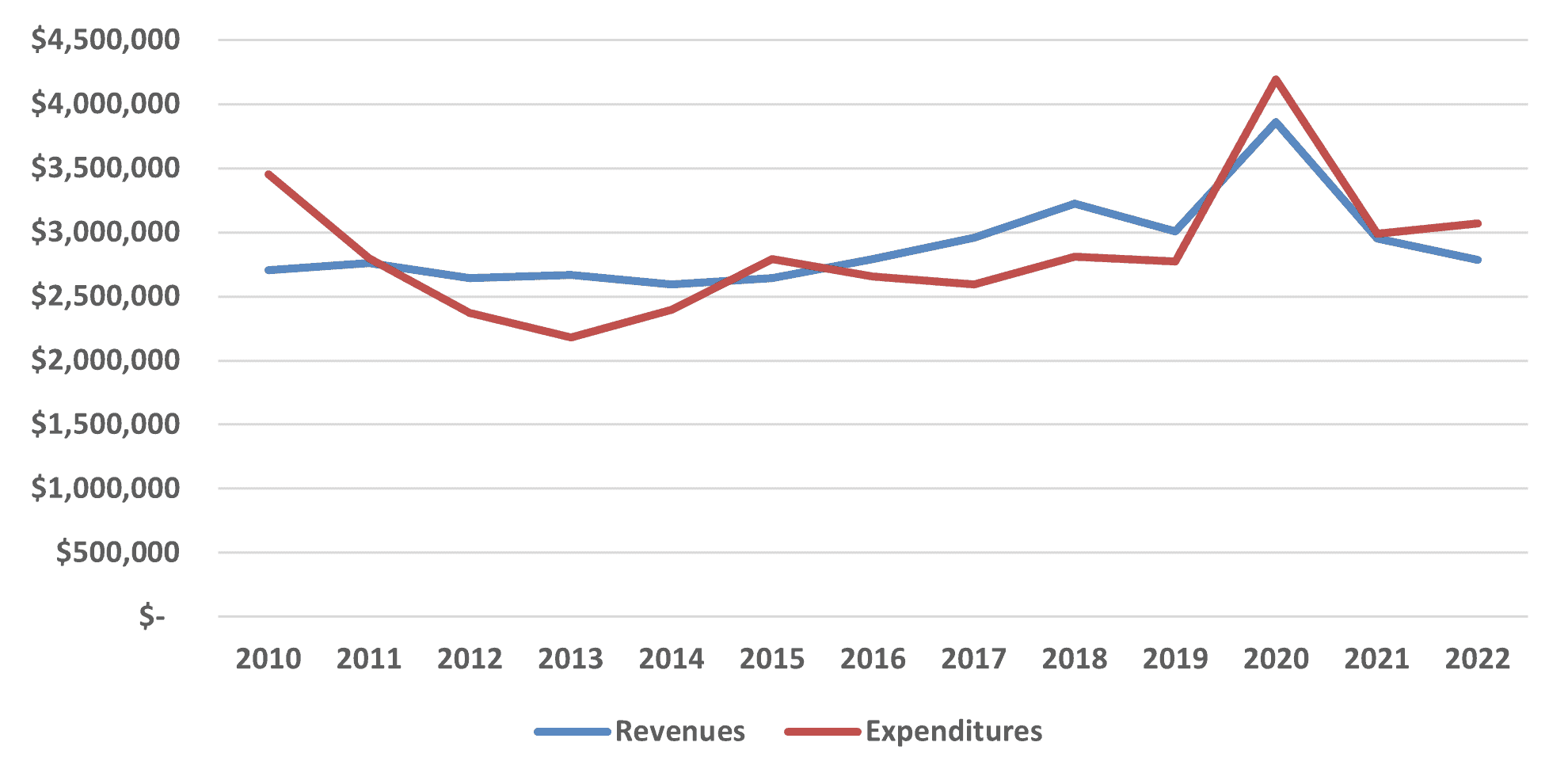
Revenue Sufficiency Analysis Limitations:
- 15-year historical period was exceptional and may have limitations in supporting projections for the future.
- 10-year period may vary significantly from the historical period due to inflation, labor economics issues, and the potential for economic correction.
- The 10-year Master Funding Plan considers near-term operations and maintenance needs, as well as capital replacement for apparatus that will meet the end of its lifespan over the 10-year period.
Revenue Sufficiency Analysis Methodology
- Developed population estimates for a ten-year period (2024 to 2033).
- Estimated and projected baseline revenues based on “levy lid lift cliff” and considering historical trends for other revenues.
- Estimated and projected baseline operating costs based on the 2023 budget and considering historical trends related to expenditure growth. Cost-of-service
projections also considered:- Fixed, mixed, and variable costs
- Economies and diseconomies of scale
- 10-year Master Funding Plan
- Estimated near-term capital expenditures based on 10-year Master Funding Plan.
- Estimated long-term capital expenditures based on apparatus lifecycle costs.
- Indexed the analysis to inflation based on the historic Implicit Price Deflator (IPD) as used by the Washington State Department of Revenue.
10-year Master Funding Plan Investments, 2024 to 2033 (2023$)
(projections from ESCI presentation on May 15th, 2023 may be updated at any time and do not represent final numbers)

- The 10-year Master Funding Plan has been updated to include
- $250,000 for a comprehensive recruitment and training program that provides two regularly scheduled annual academies and more flexible ongoing training.
- Health insurance/benefits for volunteers
- Additional general equipment purchases
- Reflects only near-term capital investment needs and does not consider long-term investment needs.
- Added long-term capital investment needs for apparatus through the development of a reserve/sinking fund for apparatus replacement based on lifecycle costs.
- Does not consider long-term investment or reserve/sinking fund needs for facilities but assumes those needs are likely out of the 20-year horizon.
- All data are estimates and projections and may not represent final numbers.
10-year Projected Revenues vs. Operating and Near- and Long-term Expenditures, 2024 to 2033 (YOE$)
Projected population growth based on historical compound annual growth rate of 1.58% in the historical period.


Revenue Sufficiency Findings
- Current revenues are insufficient to fund even regular operating expenditures
- Beyond regular operating expenditures, additional operating expenditures and near-term capital expenditures are needed to support OIFRs ongoing activities
- Additional recruitment and retention expenditures, as well as health insurance for volunteers are essential to maintaining a volunteer force; replacing the volunteer force with paid, professional staff would be even more costly
- Replacing apparatus at the end of its lifecycle is essential to maintaining insurance rating
- Not increasing revenues to support these expenditures would lead to OIFR having to provide a much lower level of service than what Orcas Island residents expect and desire
Revenue Sufficiency Analysis Limitations:
- 15-year historical period was exceptional and may have limitations in supporting projections for the future.
- 10-year period may vary significantly from the historical period due to inflation, labor economics issues, and the potential for economic correction.
- The 10-year Master Funding Plan considers near-term operations and maintenance needs, as well as capital replacement for apparatus that will meet the end of its lifespan over the 10-year period.
For the complete presentation, click here.
Historic Millage Rates for OIFR, 1964-Present (Data Compiled and Presented by Chief vanSchaick)
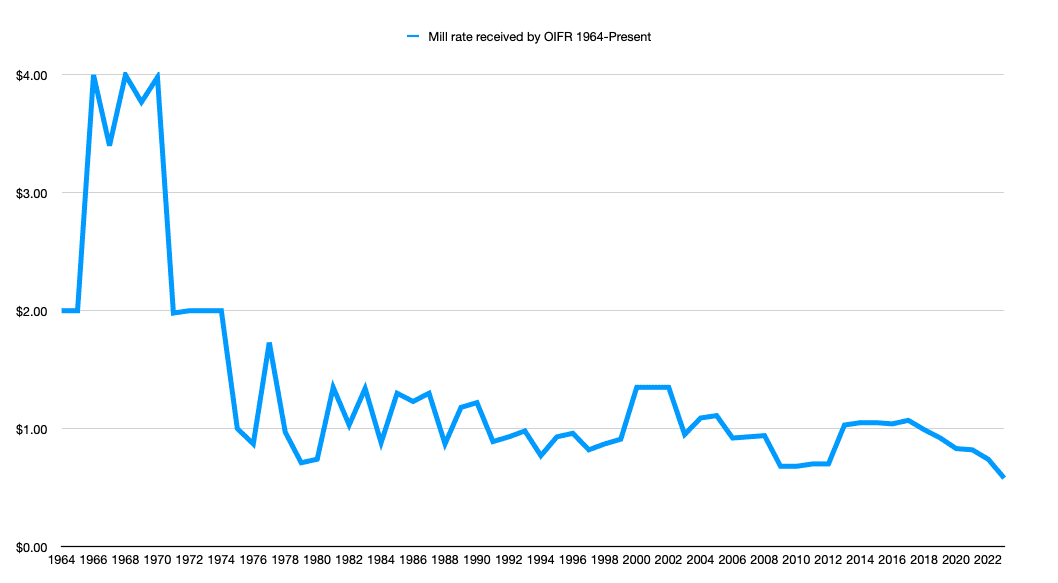
Use of Funding - Volunteer Recruitment & Retention
In the news...
Did you know?
OIFR Station 21 in Eastsound is staffed 24/7 with one Paramedic Firefighter and one EMT Firefighter. This staffing means an Advanced Life Support (ALS) ambulance team is ready to respond to medical emergencies on Orcas Island. All other outlying stations hold apparatus for the Volunteers to respond in. Having Volunteers and apparatus closer to your home may reduce your home insurance rates. For more information, visit the Washington Surveying & Rating Bureau.
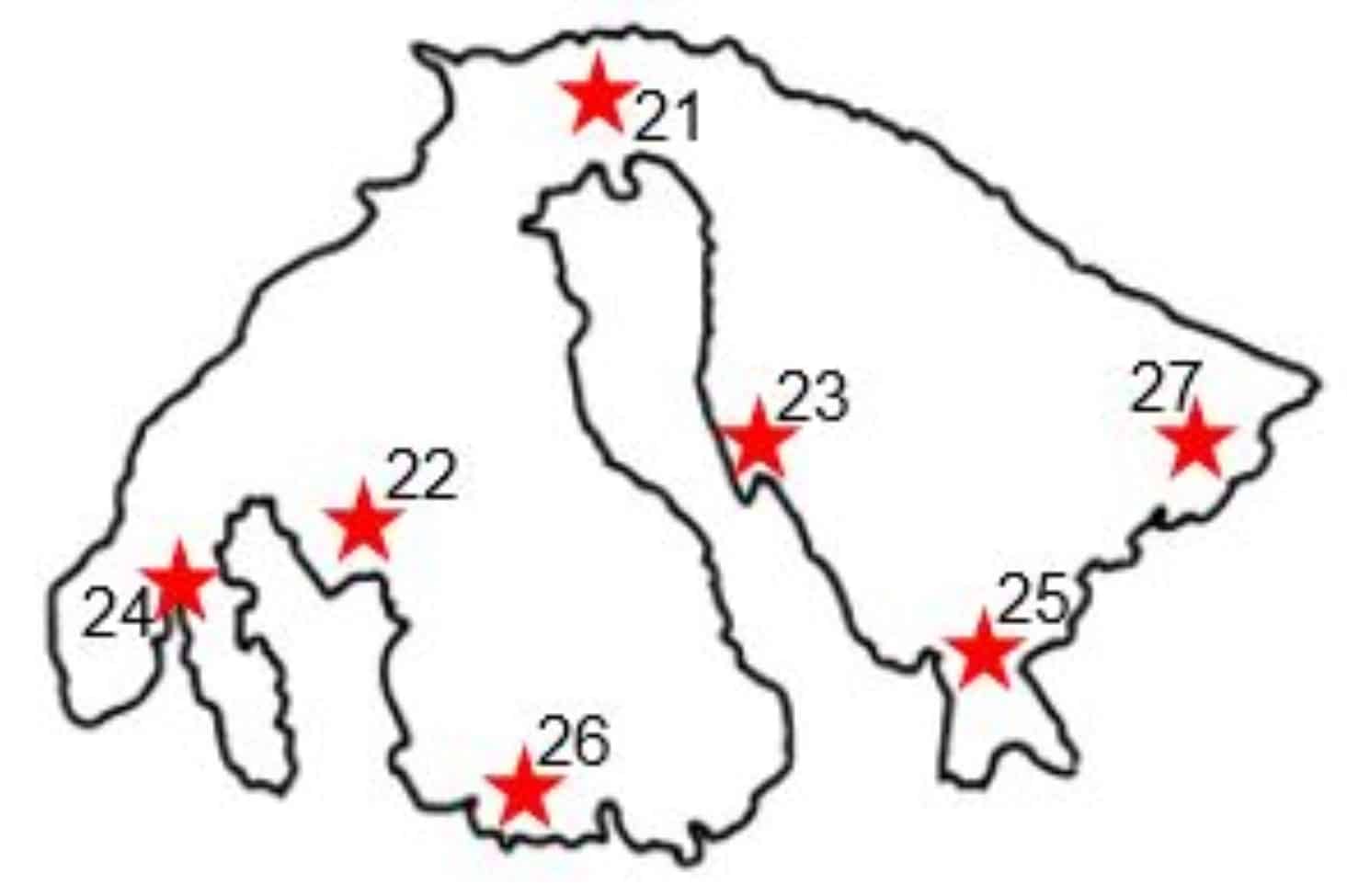
According to the US Census Bureau 10.5% of San Juan County residents under the age of 65 are without health insurance coverage. This is a substantial increase as compared to the Washington State average, which is 7.5%.
OIFR would like to both meet the specific needs of our community and recruit and retain volunteers by offering health insurance benefits based on response availability and training participation. The time involved in initial and continued training is hard to balance with full-time jobs and family. Some self-employed business owners or under-employed community members may benefit from health insurance options through volunteering, and the community at large will benefit from increased volunteer staffing.
The practice of offering health insurance for volunteers is a well established method of Recruitment and Retention (R&R), and is one of the grant categories available under FEMA SAFER grants to fire departments. In order to reduce the impact on our budget, OIFR administration has applied for a region wide grant for this specific R&R activity. The grant was not awarded to us this year (updated 2/2024). If awarded, the grant period would have been 12 to 48 months. Whether awarded or not, OIFR has budgeted to be able to continue this program for the long term.
Our volunteers are essential to operations of our fire department. Making volunteering work for them works for all of us.
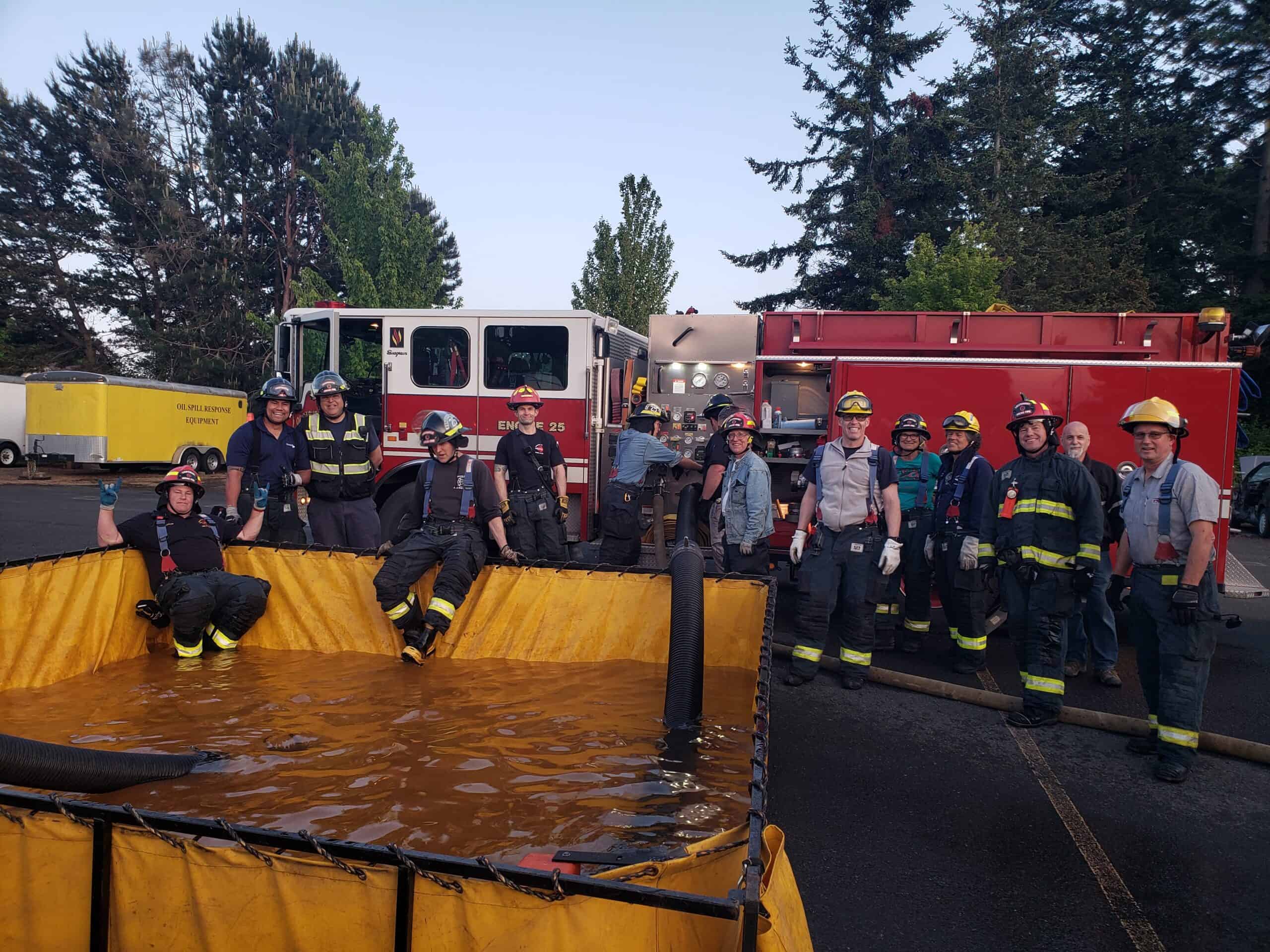
Use of Funding - Continuous Training Program
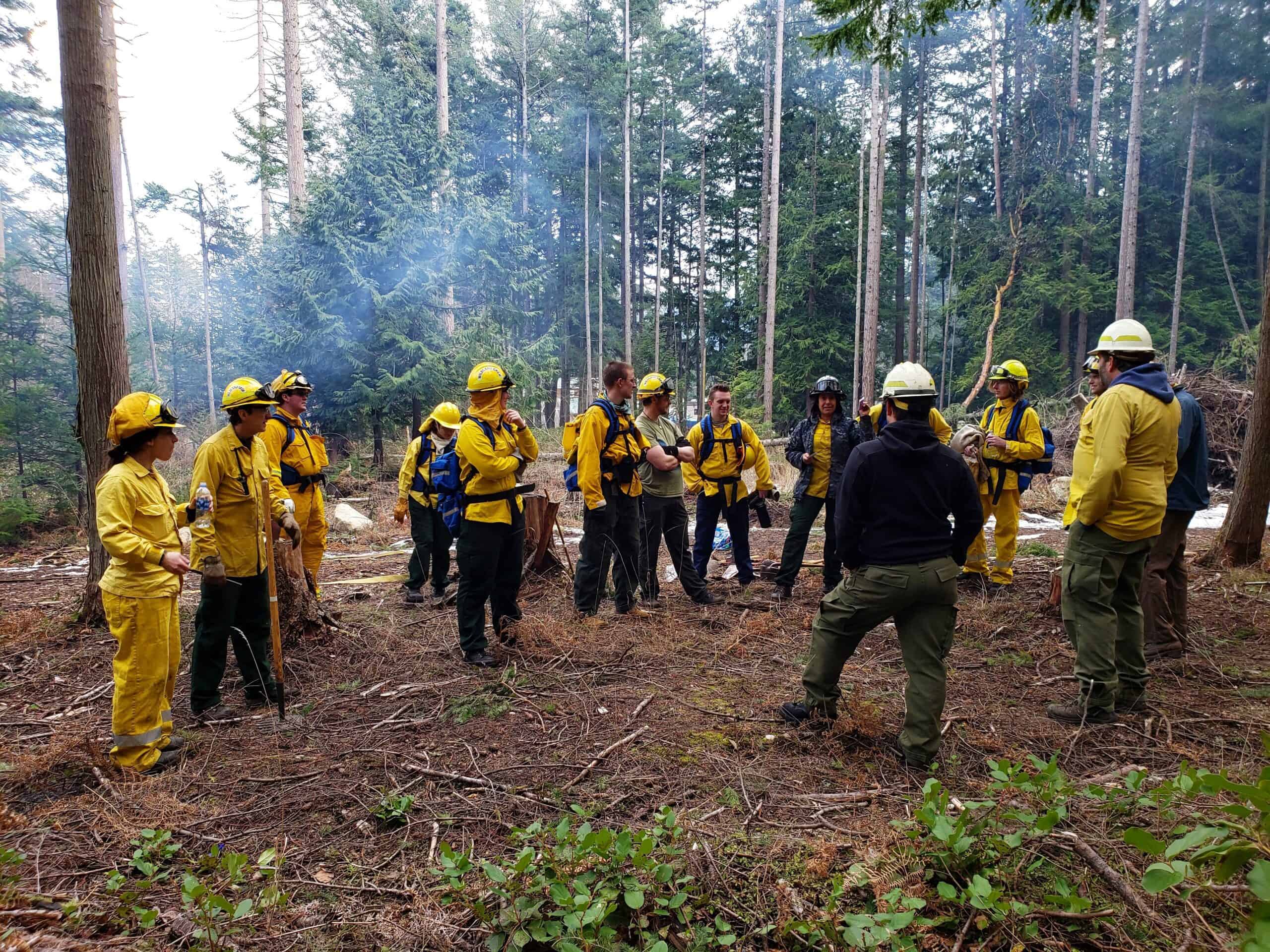
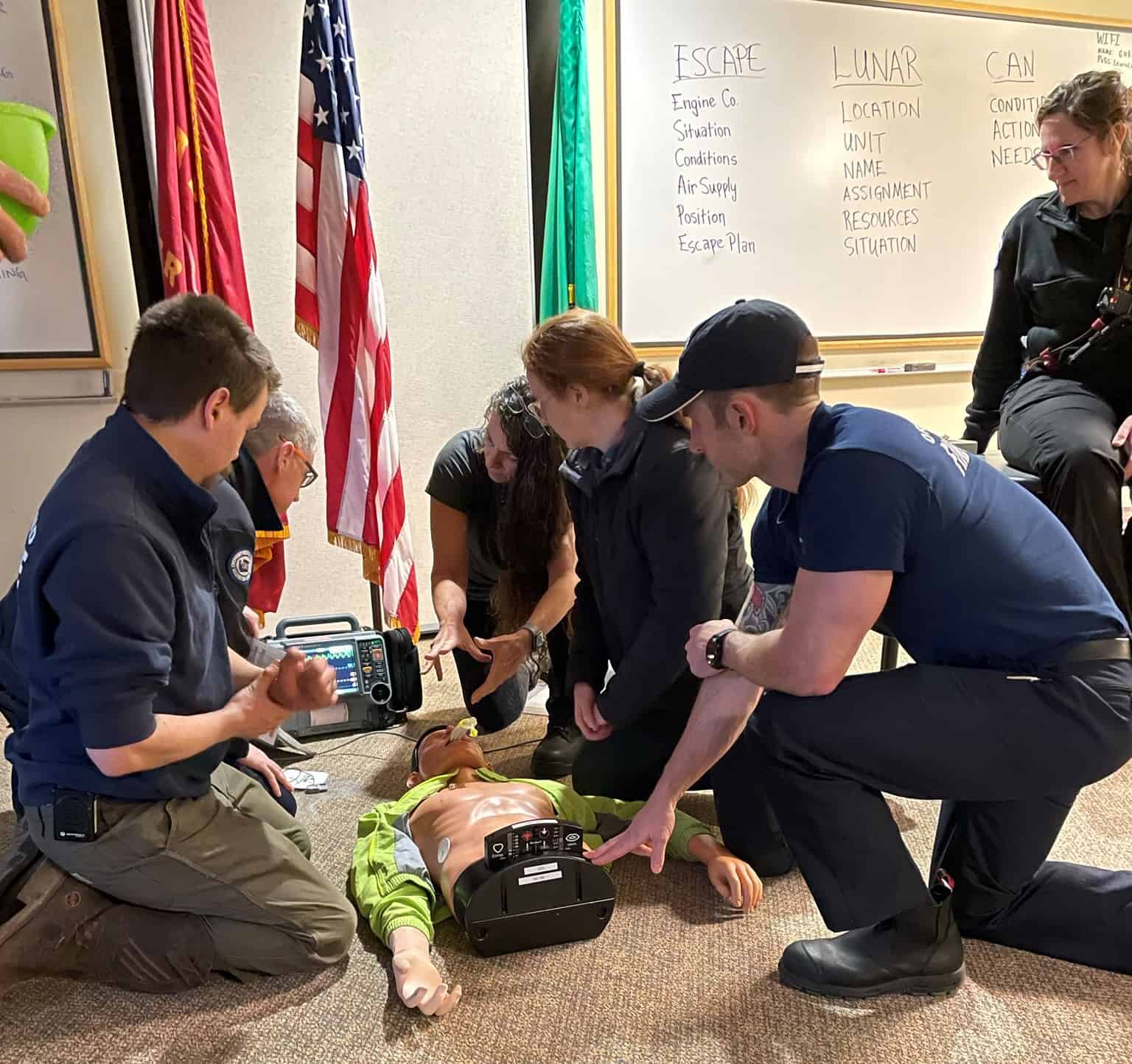

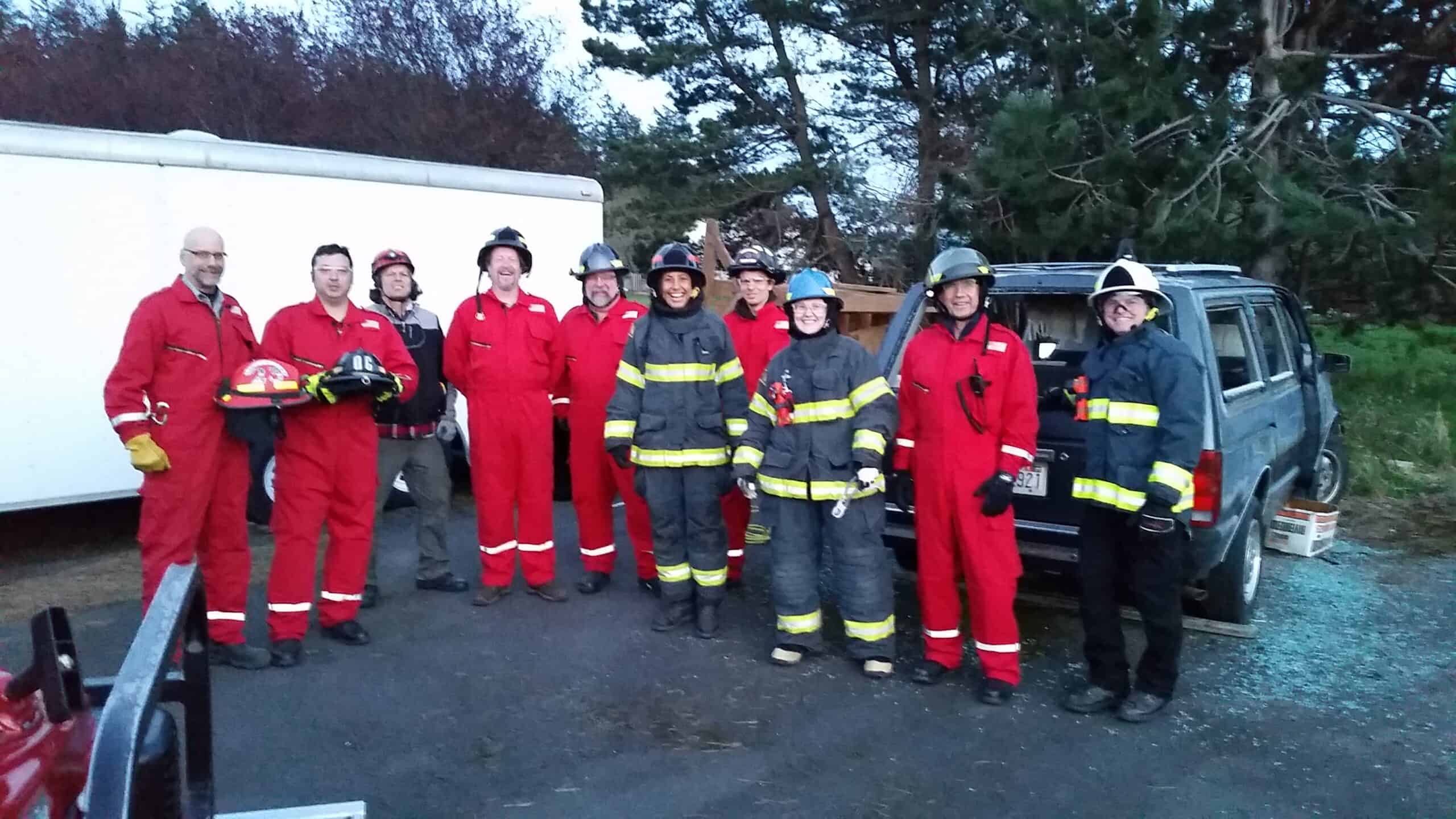
Recruiting volunteers and providing quality training programs for structural firefighters, emergency medical technicians, wildland firefighters, apparatus operators, and rescue technicians is a priority for OIFR.
- The current level of state required training - both initial and ongoing - for these specialties can be prohibitive for community members who would like to volunteer, but have busy personal schedules of their own.
- Developing a consistent and regular training program, with the ability to provide one fire academy and one EMT academy every year is essential to capturing those interested in volunteering while they are feeling motivated.
- This levy lid lift also budgets for development of a training program that conducts such academies on a regular and predictable schedule, while also providing additional flexibility in ongoing training, and continuing to unite the career and volunteer staff in the training environment.
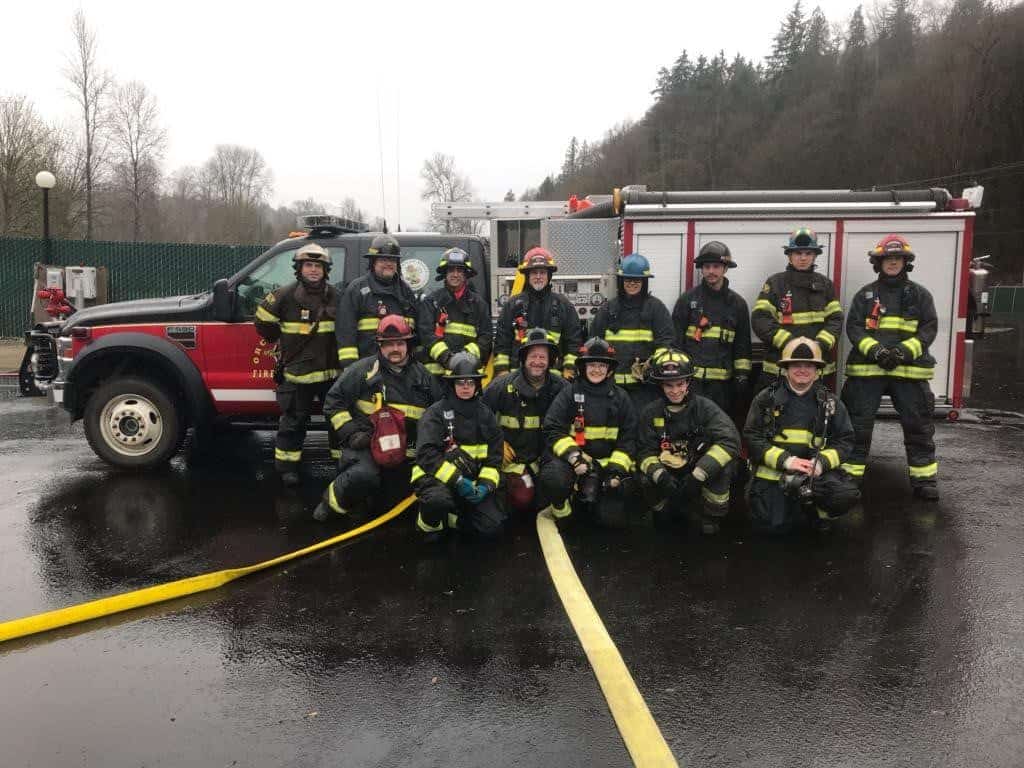
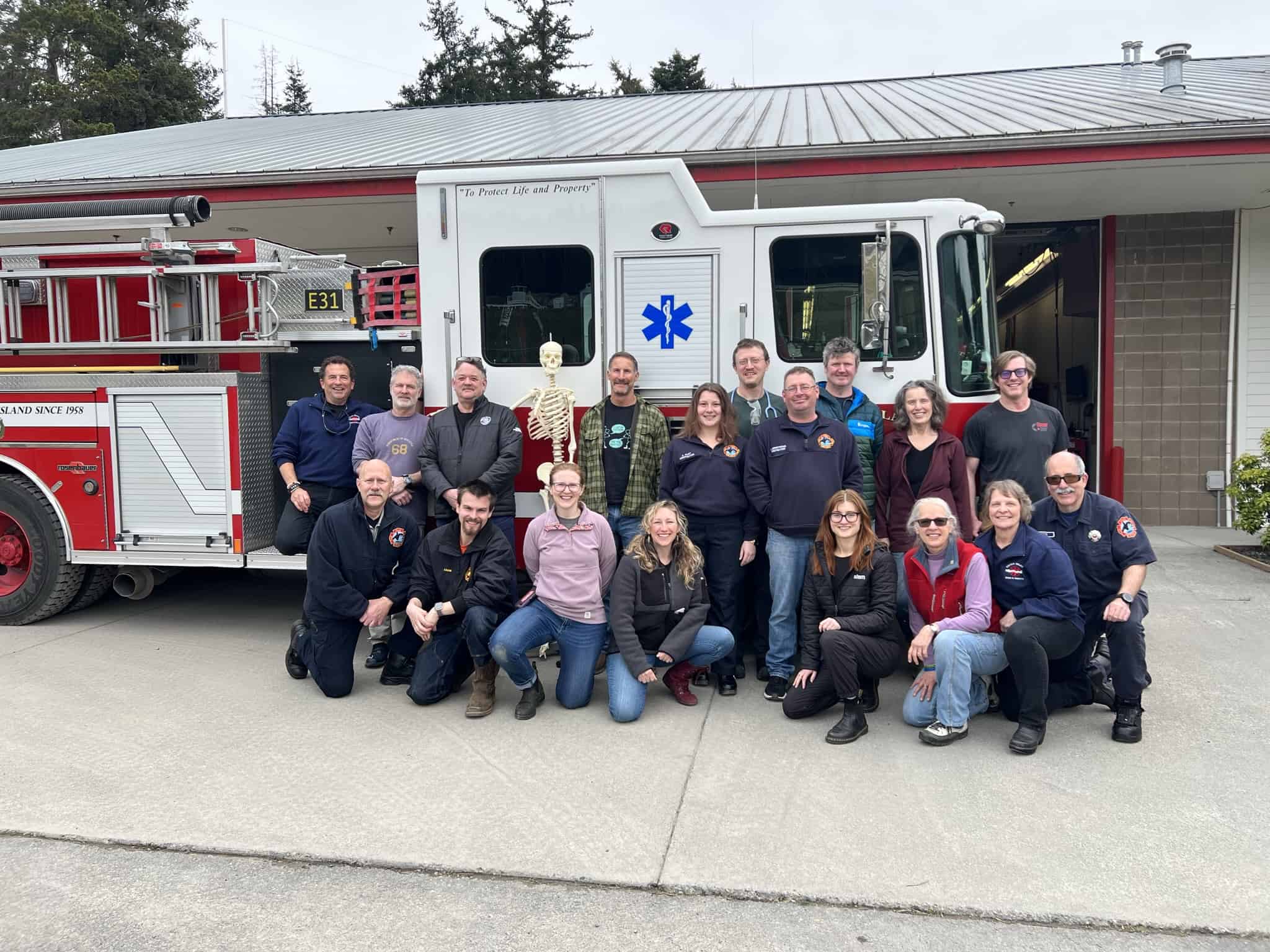
2023 Levy Lid Lift Public Outreach & Education
Press Release - July 17, 2023
The Board of Fire Commissioners has decided to put the proposition for a levy lid lift before voters in the November Election. Due to the timing of the deadline for submitting a Proposition for the November Election, the Board has to submit this Resolution prior to knowing the results of the August Primary. If the levy lid lift passes in the August Primary, this resolution will be rescinded. It is the belief of the board, after reviewing the data and research provided by professional consultants, Emergency Services Consulting International, that fully funding the fire department operations and capital needs requires the amount proposed in this resolution.
The levy lid lift would increase its regular property tax levy to $1.06/$1,000 of assessed valuation in 2023. The current levy was approved by voters in 2014 at $1.05/$1000. Due to the rapid increase in property values and the statutory 1% limitation on annual property tax (I-747), the current levy rate has decreased to approximately $0.58.
Resolution No. 2023-09
Press Release - July 10, 2023
OIFR Holding Levy Proposition Educational Sessions at the Senior Center
EASTSOUND – This month, Orcas Island Fire & Rescue Interim Chief vanSchaick and public information officer Kat Barnard are holding informational levy discussions at the Orcas Senior Center. [The first meeting was held on Monday, July 10th, at 12:30 pm in the multi-purpose room.]
The next meeting will be held Thursday, July 13th, at 11:30 am in the multi-purpose room.
Another meeting is scheduled at the Senior Center on Tuesday, July 25th, at 9:30 am, also in the multi-purpose room.
More information about the levy can be found on our website at www.orcasfire.org under Levy Information.
To schedule a meeting & discussion with your community group, contact Kat at pio@orcasfire.org.
Specific questions you may have about the levy proposition can also be directed to the same email. Thank you.
Press Release - May 17, 2023
The Board of Fire Commissioners has decided to put a proposition for a levy lid lift before voters in the August primary.
The funds available under the current tax limit are insufficient to maintain the current level of service provided by Orcas Island Fire & Rescue. There is an increase in the response standards and demand for fire and emergency medical services. At the same time, inflation causes a considerable increase in the cost of these provided services.
This levy is the primary funding source for fire and emergency medical services provided by Orcas Island Fire & Rescue. Without these funds, the response time to an emergency would drastically increase.
“The increase in revenue allows the District to budget for the continued fire engine and ambulance refurbishments and replacements, as well as keeping up with the increased cost of doing business based on recent inflation,” says Assistant Chief vanSchaick. “We want to maintain the current response level and provide funding integral to volunteer recruitment and retention.”
The levy lid lift would increase its regular property tax levy to $1.06/$1,000 of assessed valuation in 2023. The current levy was approved by voters in 2014 at $1.05/$1000. Due to the rapid increase in property values and the statutory 1% limitation on annual property tax (I-747), the current levy rate has decreased to approximately $0.58.
Resolution No. 2023-07
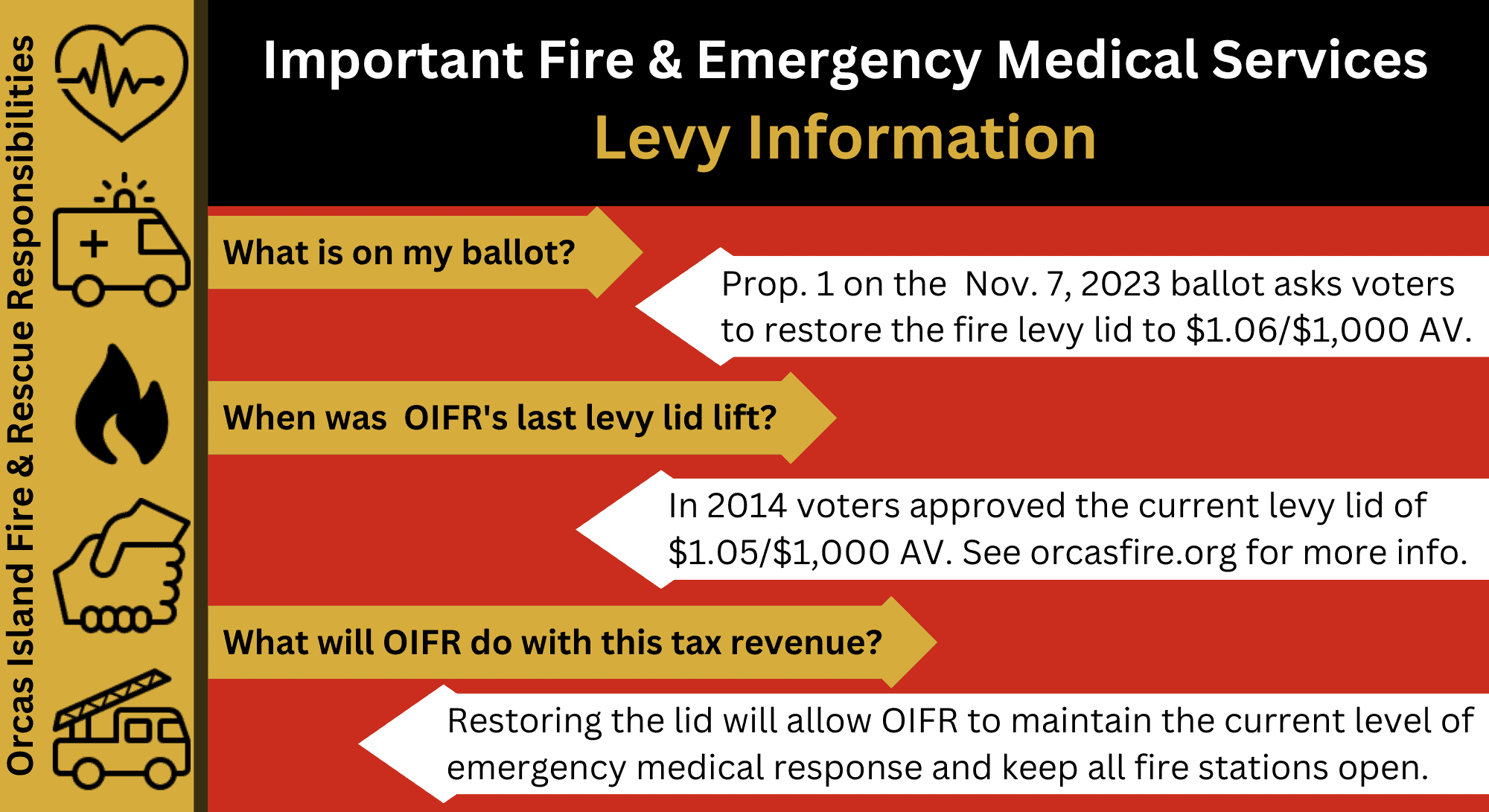
GET THE FACTS ON ORCAS ISLAND FIRE LEVY LID LIFT
What is on the ballot?
Proposition 1 on the November 7, 2023 ballot asks voters to restore the fire levy lid to $1.06/$1,000 AV.
When was OIFR's last levy lid lift?
In 2014 voters approved the current levy lid of $1.05/$1,000 AV.
Why do we need a fire levy lid lift now?
Due to the rapid increase in property values and the statutory 1% limitation on annual property tax (I-747), the current levy rate has decreased to approximately $0.58.
What will OIFR do with this tax revenue?
Restoring the lid will allow OIFR to maintain the current level of emergency medical response and keep all fire stations open. This includes career staff, administration, and volunteers.
What will happen without a levy lid lift?
Without a lid lift, property tax revenue for 2024 will be insufficient to maintain the current level of service and will require layoffs, delays in much needed fleet replacement, refurbishment, and maintenance on our fire stations.
Time for Facts
Hello Orcas Community! A sincere thanks to those who have been able to attend one of our levy lid lift education sessions or the recent Town Hall meeting at the Eastsound Firehall. Our community is facing complex issues regarding the future of Orcas Island Fire & Rescue (OIFR), and we are asking voters to make important decisions in the November General Election.
It is all too common for factual information to become entangled with conjecture. On behalf of OIFR, my purpose here is to share factual responses to some common questions circulating in the community regarding the levy lid lift request.
“Why not go back out for a 'different levy' in 2024 after the next Commission is in place?”
A levy lid lift passed in 2024 will not take effect until 2025 causing OIFR to face a deficit at the end of 2024. If voters choose not to pass the current lid lift, staff and services will decrease in order to function within the available revenue.
In November, voters will also select board members for the Fire Commission. The newly elected BOFC will have the ability to create a revised revenue plan to put before voters if required. Approving the current lid lift will not take away the next Board's ability to plan the financial future of OIFR but will prevent staffing reductions in the meantime.
“Why are you ordering a new ambulance when money is so tight?”
More than 70% of our emergency service calls are medical in nature. Having reliable Advanced Life Support ambulances is a vital component of delivering lifesaving medical care.
One of our two Advanced Life Support ambulances is built on a 2007 F-450 chassis. Due to a transmission failure and then a blown suspension airbag, it was out of service from the first week of June until mid-September.
Such, failures are more frequent with older equipment and are likely to continue to be an issue with our aged apparatus. Without reliable functional ambulances, we can’t provide timely emergency medical care and transport to our community during crucial moments.
OIFR is applying for a Washington LOCAL loan to offset the cash expense of the new ambulance.
“Why is OIFR creating a 'new position' by hiring an assistant chief?”
The assistant chief position is not new to OIFR. The assistant chief serves a variety of needs in both administrative duties and emergency response.
In November, our community will be rated by the Washington Survey and Ratings Bureau (WSRB) to establish our fire protection class, which impacts our homeowner’s insurance premiums. One factor evaluated will be 24/7 chief officer response availability. Currently, I am the only chief officer. Although I have been fulfilling this duty chief role for the vast majority of days since mid-May, this is not a feasible permanent solution. The assistant chief position fulfills this need, while also being available to respond to calls providing EMS care and fire/rescue response as needed.
If OIFR decided not to hire an assistant chief at this time and left the position vacant to save money, we would still be facing layoffs of multiple career EMT positions. Regaining one EMT position by losing the assistant chief position is not in the department’s best interest.
Our career EMTs work a schedule of two days on followed by six days off. Trading one EMT position for the assistant chief position would only provide that additional responder two days out of eight. The assistant chief position not only provides the administrative oversight, program management and duty chief coverage, but also provides far more days available to call response than does a single EMT position. Facing the EMT layoffs either way, it will be more important than ever to have that additional responder able to jump in and support the response plan as needed.
“Why is OIFR still recruiting volunteers?”
Whether the lid lift passes or fails, volunteers will continue to be a vital and necessary part of OIFR’s response plan.
Should the lid lift fail in November, OIFR will rely more than ever on our volunteer firefighters and EMTs to respond with our professional paramedic firefighters to meet the needs of our island community.
“Why will OIFR have to lay off employees in 2023, when the current lid lift doesn’t expire until the end of 2024?”
The answer to this question arises from the timing of tax revenue distributions to OIFR. Our annual budget tracks the calendar year; however, property tax revenues are paid to OIFR twice annually, due in April and October. To remain solvent, OIFR must have enough funding in hand at the end of 2024 to pay expenses through April 2025, when tax revenue will become available again.
Despite postponing much needed vehicle refurbishment and replacement and repairs to stations, at our current level of staffing OIFR will not have enough money at the end of 2024 to make it through to April of 2025 without a lid lift approval enacted in 2023.
Having already cut what we can from apparatus and station needs, personnel costs are the next place to look for savings. As you can see from the chart below, our financial projections show that with these cuts, we will still be significantly short of what we need at the end of 2024. If the lid lift doesn’t pass in November, we will need to start staffing cuts immediately to be solvent through April of 2025.
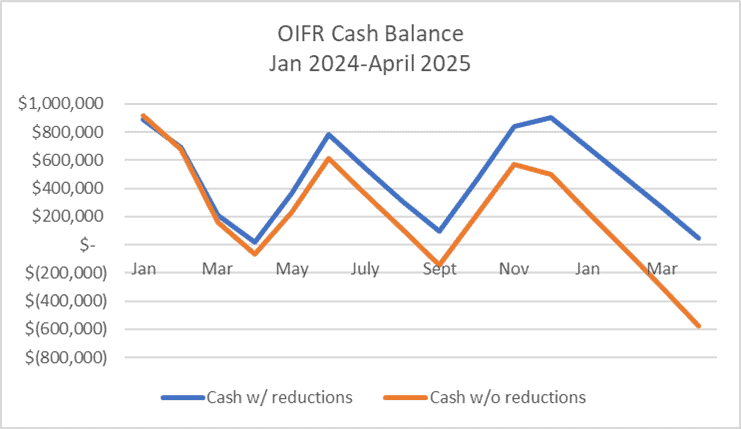
“Why is OIFR only laying off our local EMTs?”
Employee layoff decisions are unrelated to who is “local” and who is not. Rather, the current layoff plan reflects the critical differences in training and scope of practice between Paramedics and Emergency Medical Technicians-Basics (EMT-B, or commonly referred to as just “EMTs”).
Paramedics are certified by WA DOH to provide Advanced Life Support (ALS) medical care. Maintaining ALS care is especially important on our island, where we have no emergency room, and transport to the mainland can be time consuming. Paramedics act as an extension of the hospital emergency room by starting IVs, inserting breathing tubes, and administering a variety of intravenous medications in remote communication with emergency doctors. On Orcas Island, our Paramedics carry and are trained administer more than 40 medications during EMS incidents, in addition to performing potentially lifesaving surgical and non-surgical interventions.
By contrast, EMTs are certified to provide Basic Life Support (BLS) medical care. They are limited to a handful of medications, and cannot start IVs or give intravenous medication. EMTs also cannot provide pain management medications . While we greatly value the contributions of our career (and volunteer) EMTs, it is essential that Orcas Island maintain ALS staffing as long as it fiscally possible.
OIFR invested significant time and resources – over $100,000 from 2018 to 2020 - to put three of our local employees through paramedic training. Only one of the three completed the training and has since left to work for a mainland fire department.
Per the Collective Bargaining Agreement that OIFR has with IAFF Local 3911, layoffs require a minimum of 60 days notification prior to their effective date. Therefore, OIFR had to send out notifications prior to knowing the results of the November General Election. In the layoff notification, it was stated that the reduction in force is revoked if the lid lift measure is successful in the November General Election.
Thank you for your time and attention. We at OIFR are committed to doing our best with the resources our community decides to commit to fire and EMS services. It is my hope that this information can help voters make an informed decision, based on direct information.
Sincerely,
Holly vanSchaick
Fire Chief
If you have more questions, please reach out to our Public Information Officer at pio@orcasfire.org.




